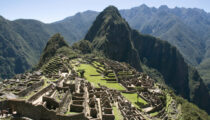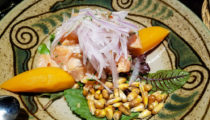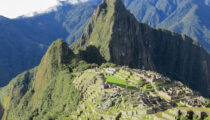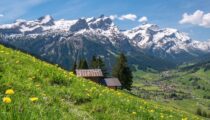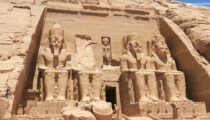October 15, 2015
Just Back: Insider Peru
We recently returned from an extensive private tour through Peru, one of our favorite destinations for its rich offering of cultural, culinary and adventure experiences. During our time there, we experienced the highlights of Lima, Arequipa, Colca Canyon, the Sacred Valley, Machu Picchu (including Huayna Picchu) and Cusco. We also made special visits to the Nazca Lines and the Bellestas Islands, visited local markets, ate at top restaurants and learned to prepare classic Peruvian dishes.
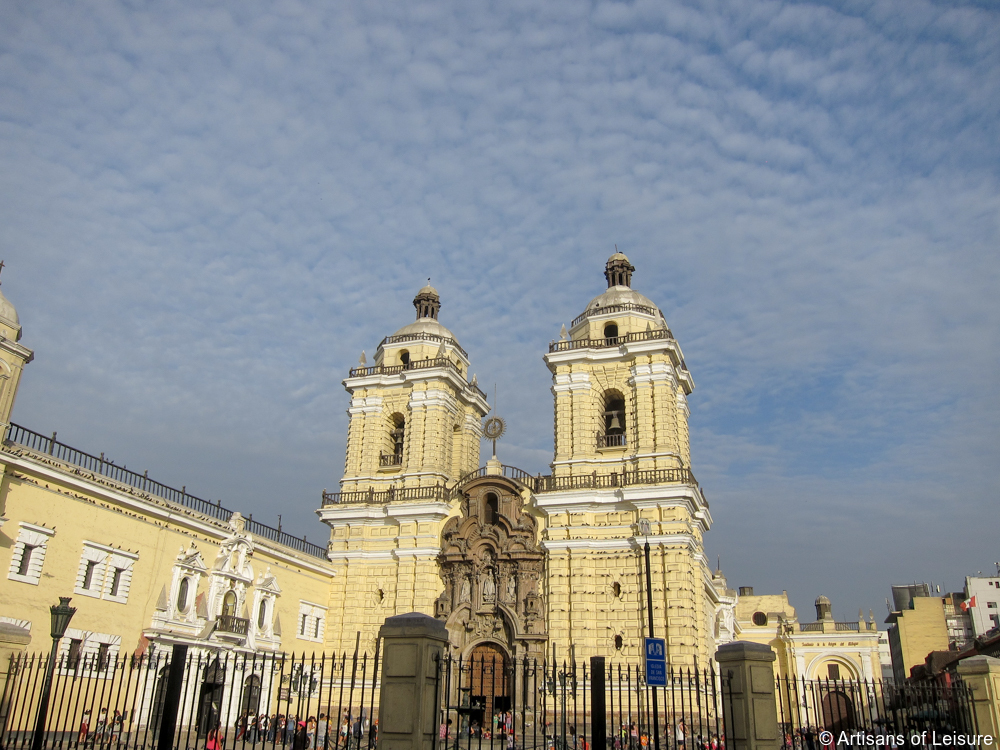
Our Peru tour started in Lima. The historic center of the Peruvian capital is a UNESCO World Heritage Site graced with wide plazas and filled with Spanish colonial architecture.
We stayed at Lima’s top hotel, the Belmond Miraflores Park. The spacious rooms offer ocean views, and the hotel is located near some of the city’s best restaurants and shops.
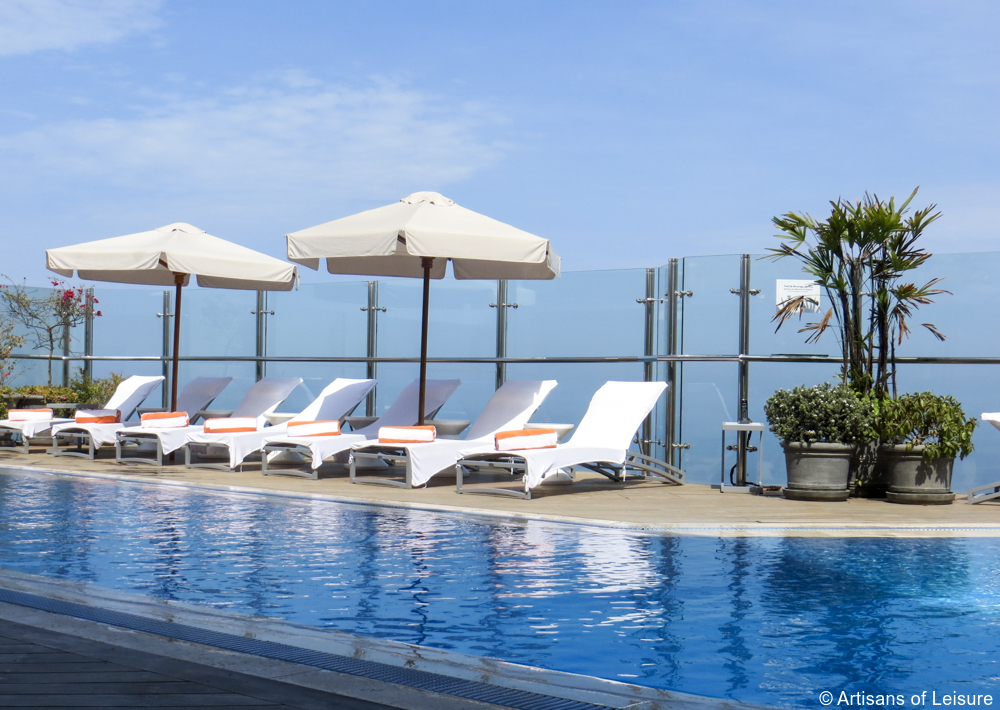
Peru has emerged as one of Latin America’s top culinary destinations and we enjoyed a private insider foodie tour of the city. A highlight was a behind-the-scenes visit to the world-renowned Astrid & Gaston restaurant.
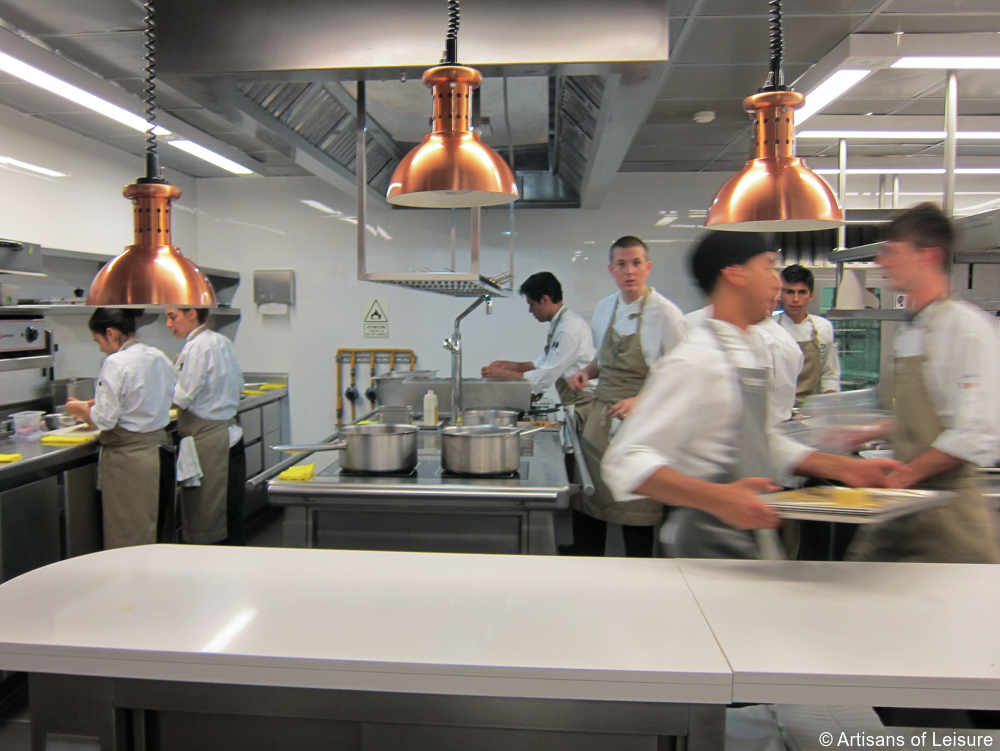
Artisans of Leisure can also arrange difficult-to-obtain reservations at the restaurant. Diners can opt for an extensive multi-course gourmet tasting menu or a more casual a-la-carte experience.
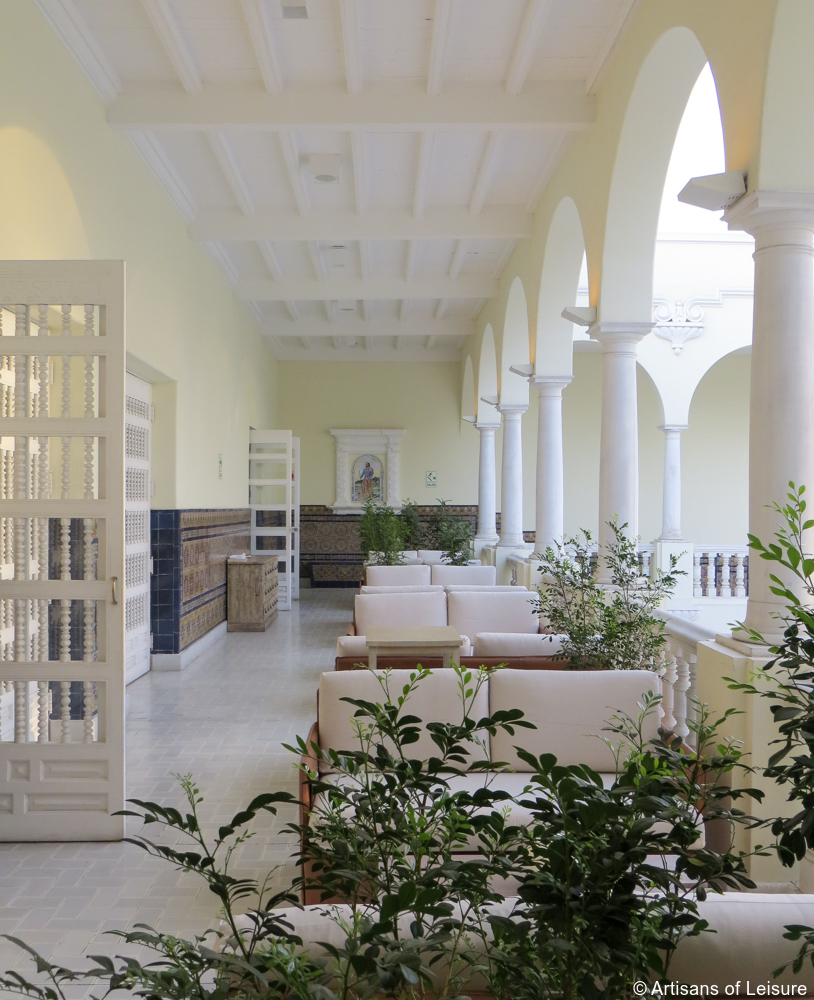
Peru grows an abundance and wide variety of produce. Our privately guided visit to a local market included tasting local fruits and vegetables…
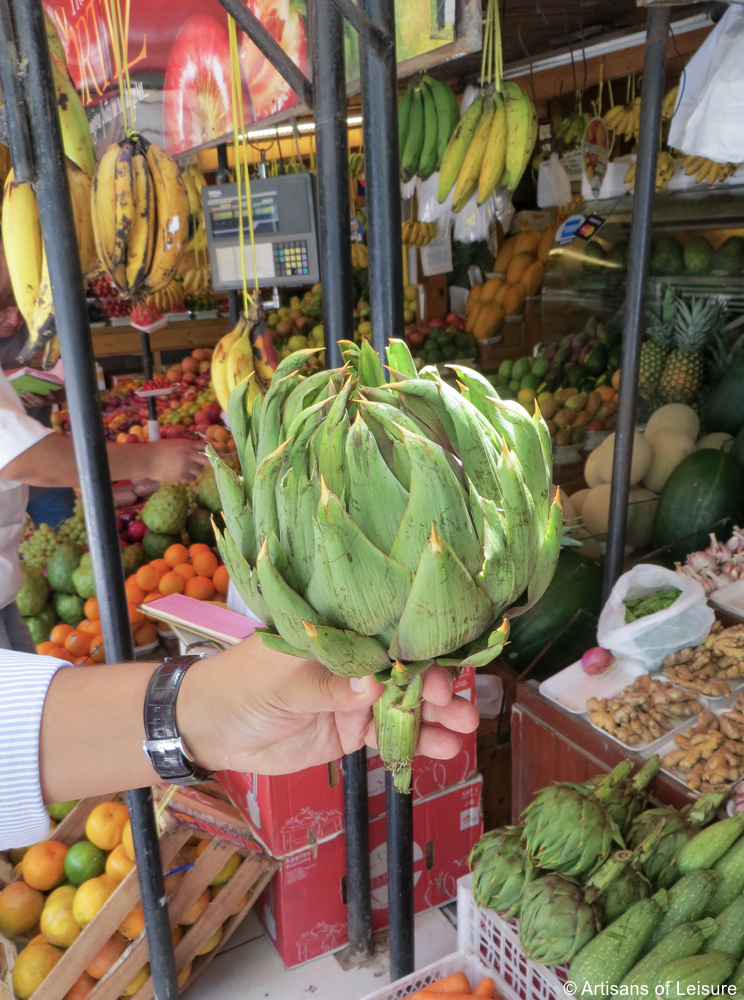
…and making new friends.
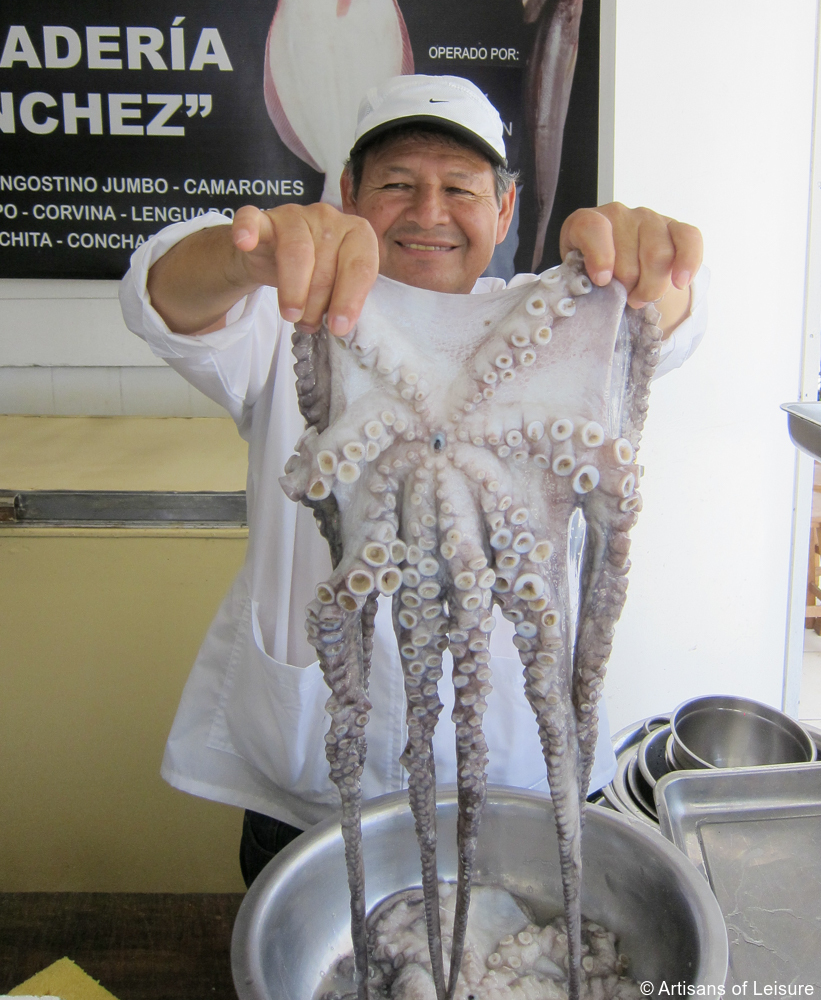
We learned to make and serve a pisco sour, the national drink, during a private lesson.
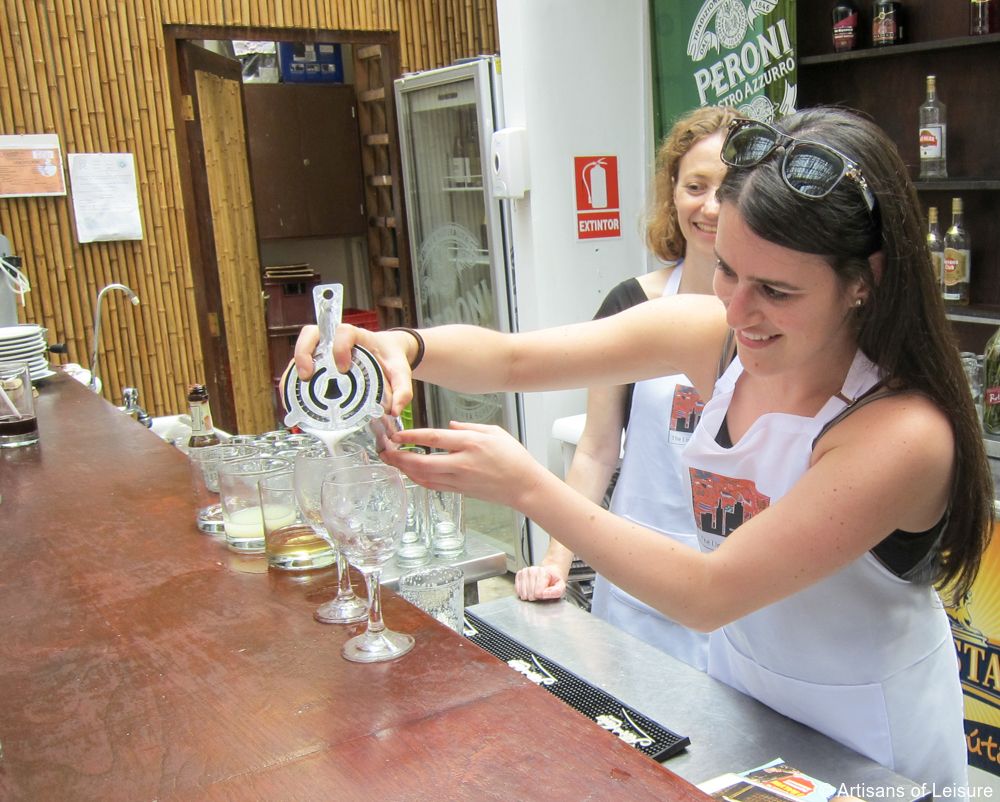
We also learned to make ceviche (raw fish marinated in lime juice, chilies and onions). One of Peru’s iconic dishes, ceviche is only served until the middle of the day, guaranteeing that only the freshest fish is used.
Peru’s Pacific coastline stretches for 1,500 miles (2,414 km), and seafood in Peru is abundant and fresh.
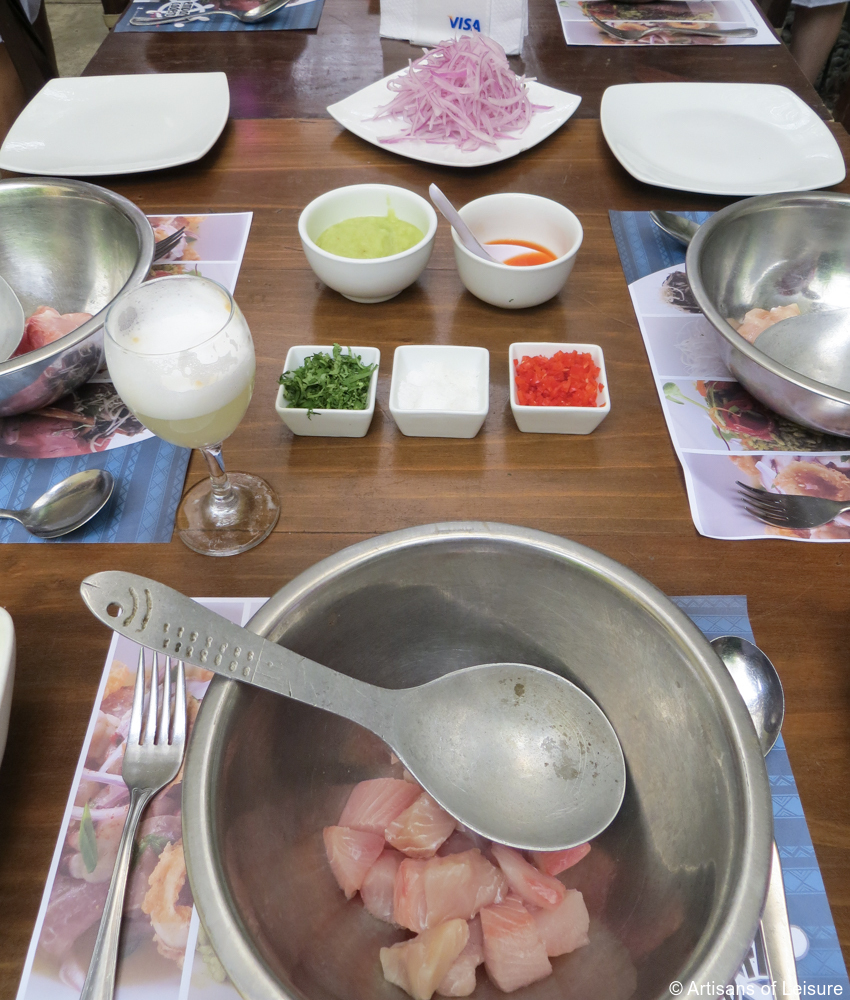
Some of the most interesting food in Lima is being made in the colorful Barranco neighborhood.
Barranco’s varied and eclectic architectural style reflects the fusion of various populations that have resided in the neighborhood throughout its history.
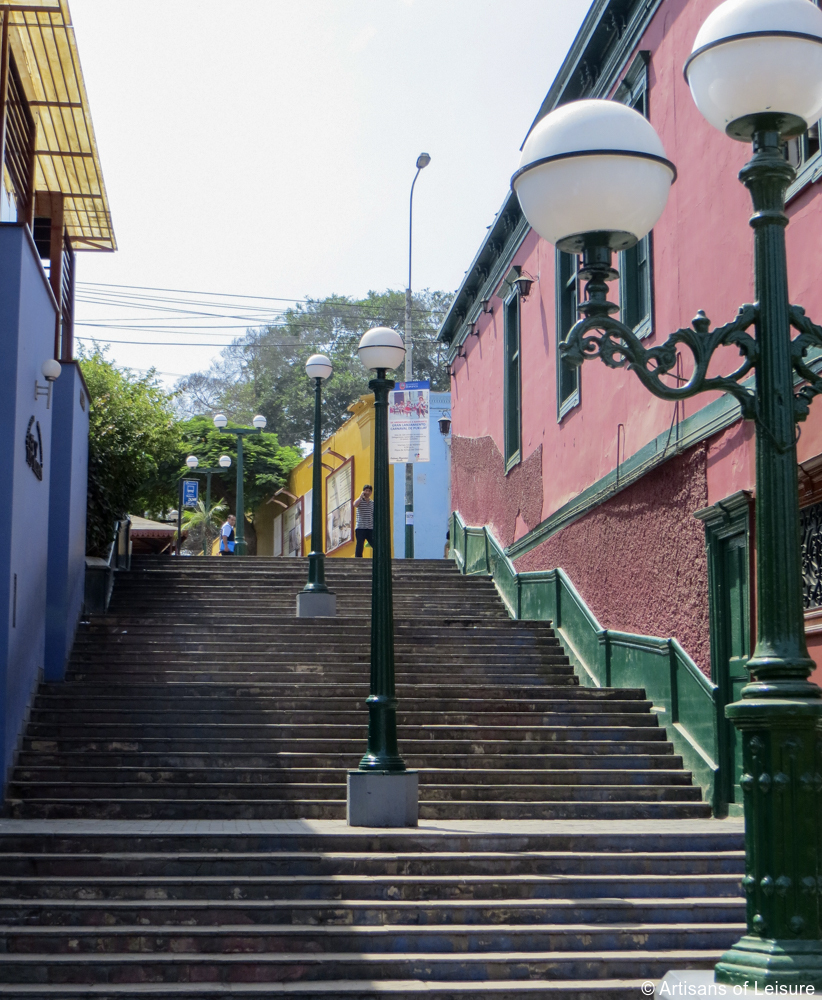
A cultural highlight of Lima is the Larco Museum, which offers fascinating insights into 5,000 years of pre-Columbian history in Peru. Visitors can see some of the museum’s 45,000 pieces in its storerooms, shown here, which are open to the public.
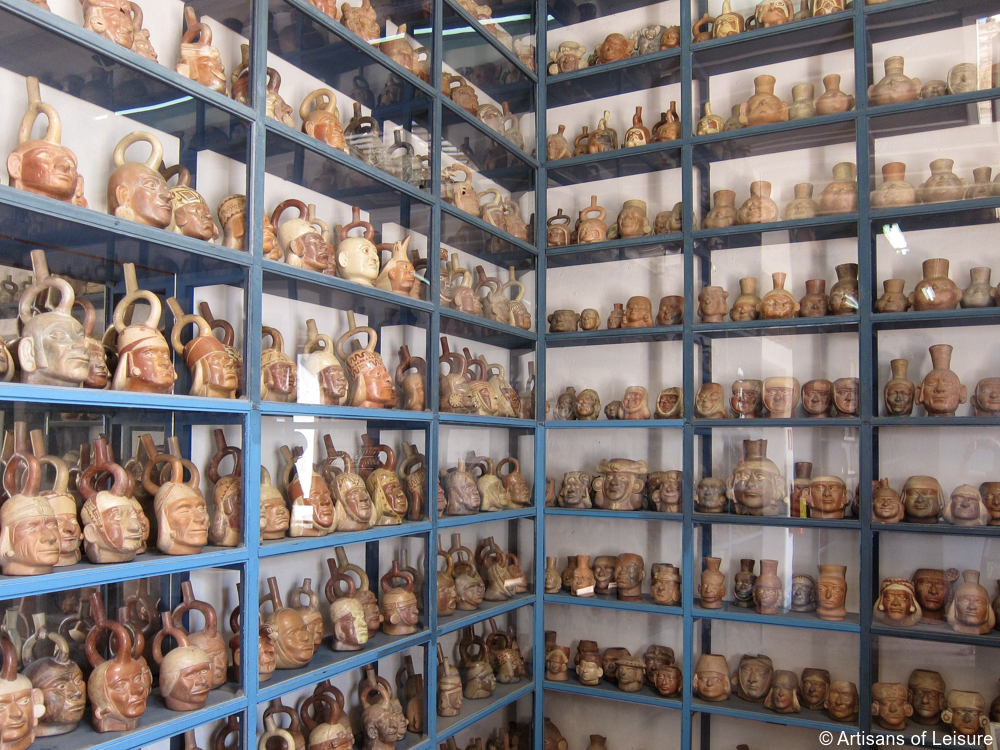
An introduction to Lima’s historic architecture includes seeing elaborate balconies, such as the intricately carved examples that adorn the Archbishop’s Palace.
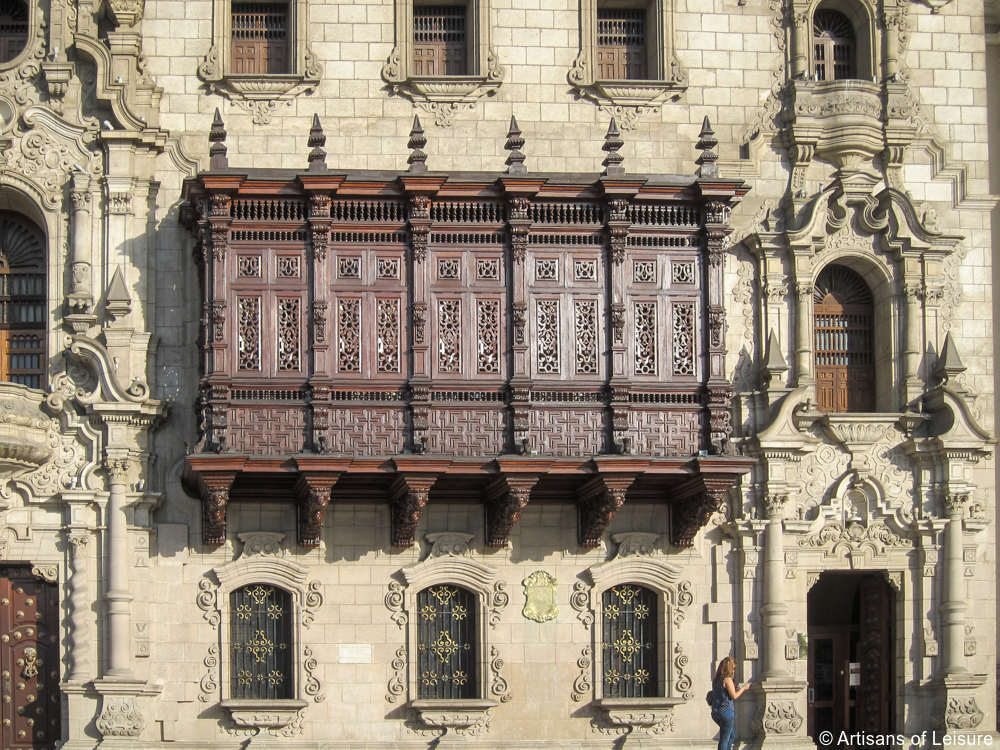
Our next stop was Arequipa, a city that dates to the Spanish colonial era and has several magnificent volcanoes as a backdrop. Arequipa is often known as “The White City” for the distinctive sillar volcanic rock used as a primary building material in many of the historic structures.
In the historical center of Arequipa—a UNESCO World Heritage Site—Artisans of Leisure can arrange private tours of Santa Catalina Monastery. Dating to the 16th century, the monastery was populated by Dominican nuns. In its heyday, the monastery housed 450 women, including servants. Today, only about 20 nuns remain.
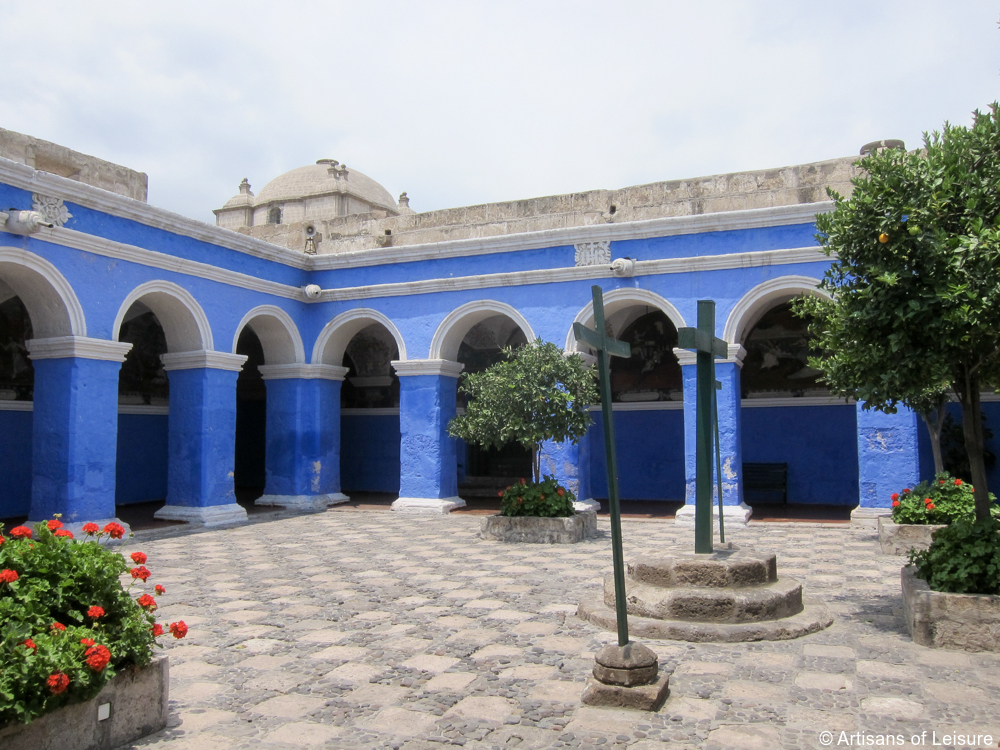
The traditional crafts produced by the nuns echo the bright colors of the monastery walls.
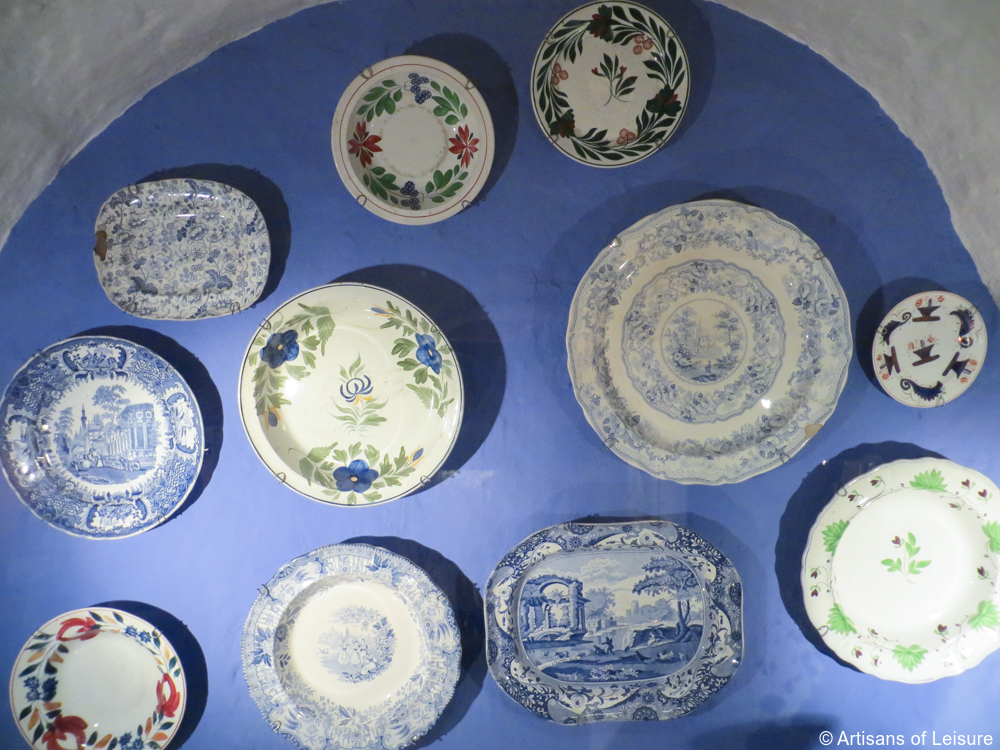
The grounds of Santa Catalina Monastery resemble a village. The streets and courtyards throughout the complex resemble architectural styles found in Spain. It’s fascinating to explore the nuns’ cells and get a feeling for life at the monastery.
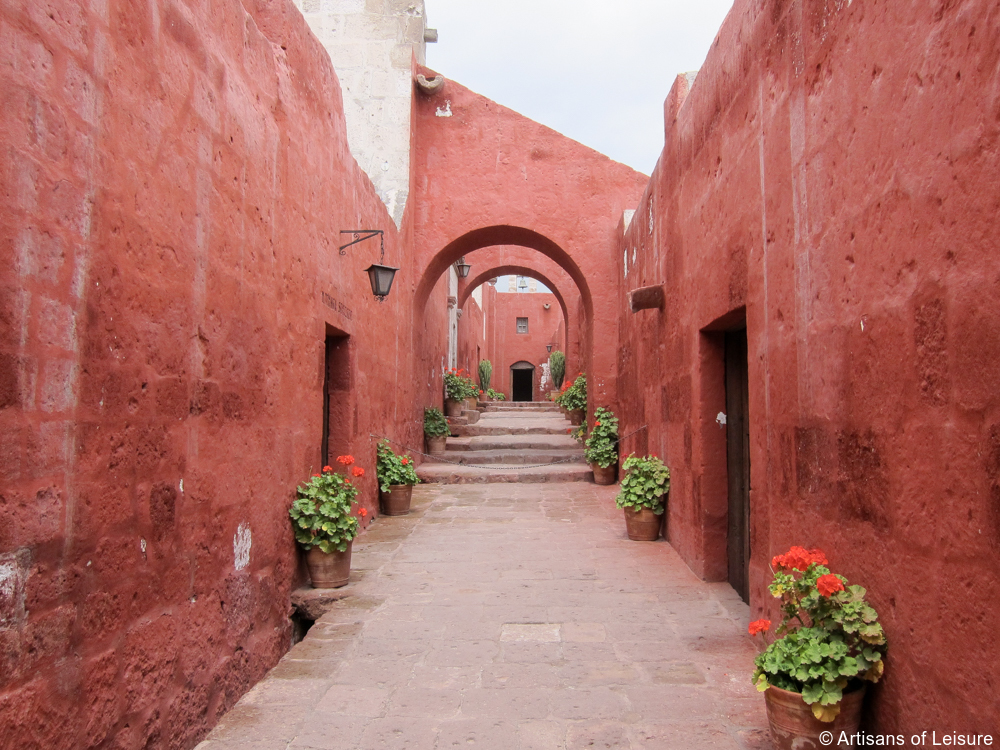
Arequipa also has a vibrant market. This is just a small sample of the more than 3,500 different varieties of potato grown in Peru.
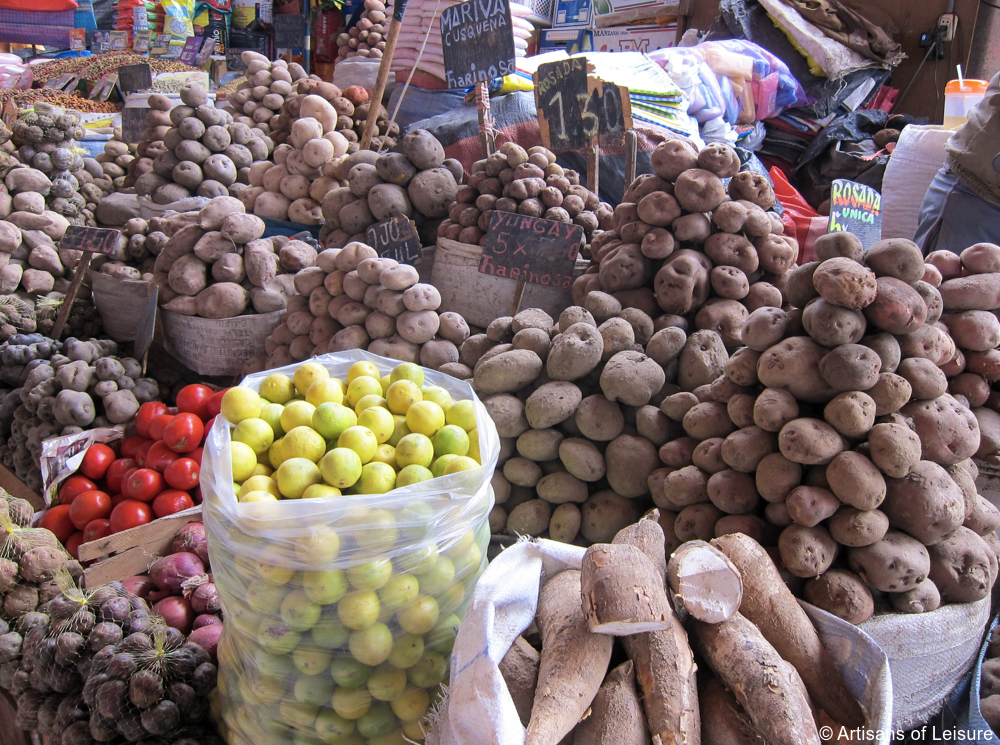
Stalls in the market also sell cheese and prepared foods.
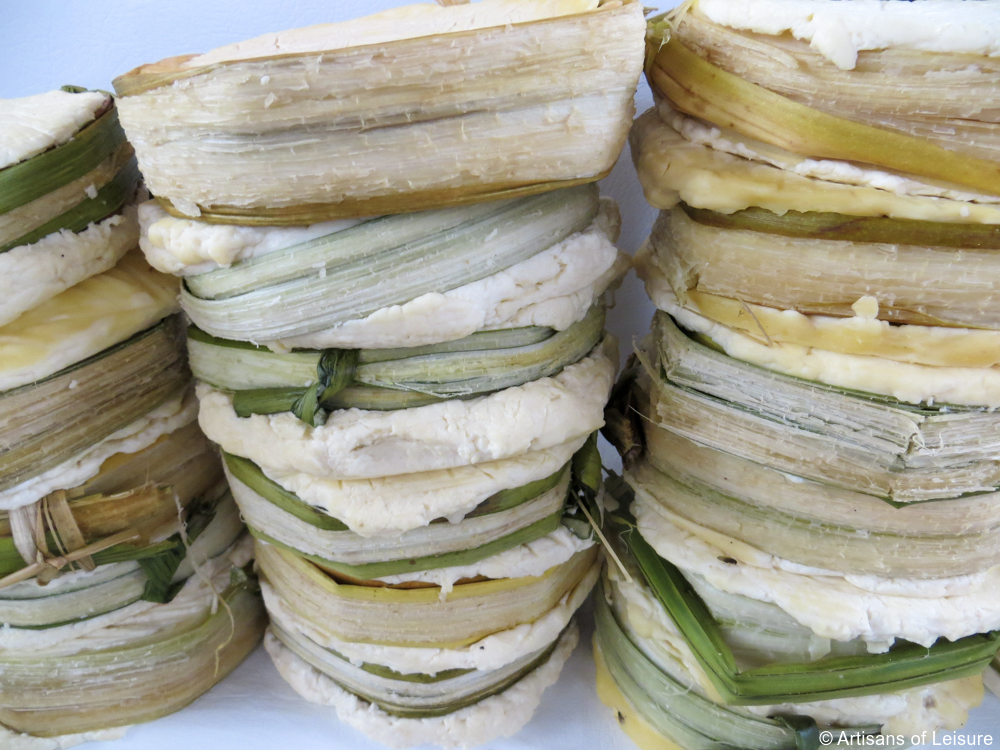
The spacious Plaza de Armas in Arequipa is a great place to relax and take in views of the volcanoes in the distance.
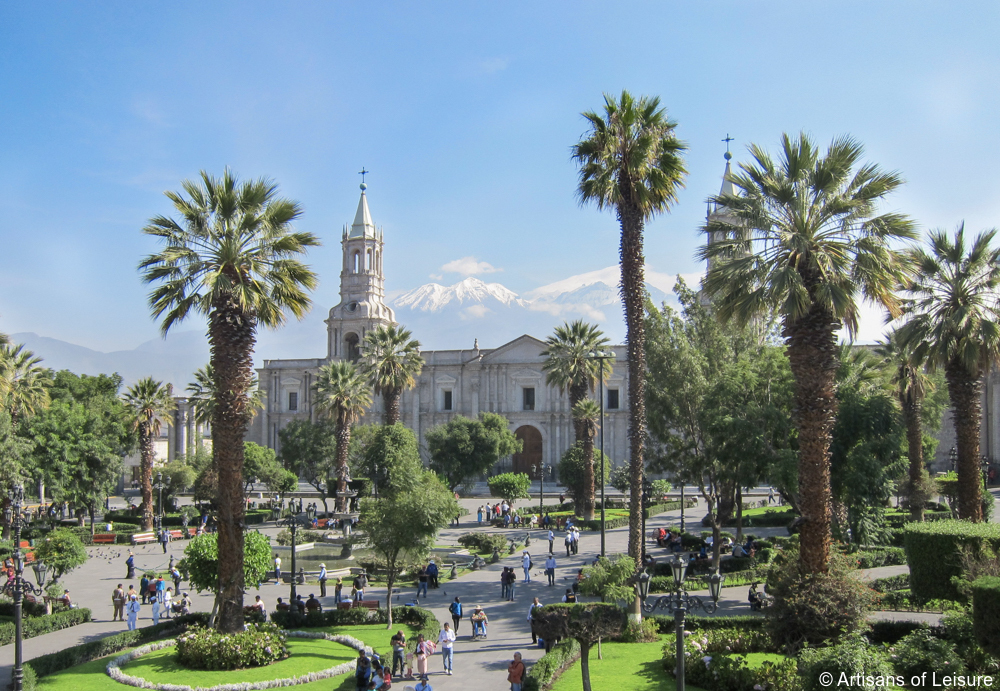
Next, we journeyed to Colca Valley. En route, we stopped in Yanahuara, a suburb of Arequipa. The town’s 18th-century Church of St. John the Baptist is a Churrigueresque masterpiece of syncretic art that combines indigenous and Catholic symbols.
Our guide explained the symbolism of carvings on the exterior lintels, which feature jaguars, birds, flowers and fruit interspersed among angels and saints. The town also offers great views of Arequipa and the volcanoes.
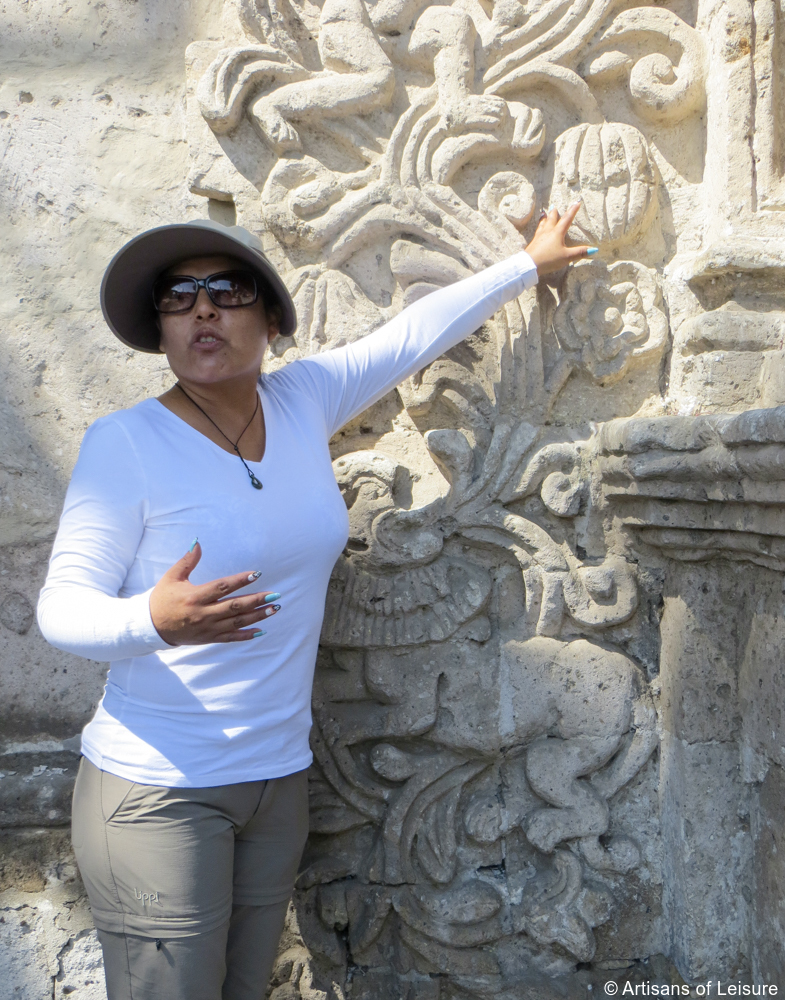
The drive to Colca Valley steadily climbs from Arequipa (elevation 7,661 ft/2,335 m) to Patapampa Pass (16,109 ft/4,910 m), the highest point of the journey, before descending into the valley. Our expert guides offered tips on acclimating to the high elevation. En route, we stopped for tea made from local medicinal herbs that helped alleviate symptoms.
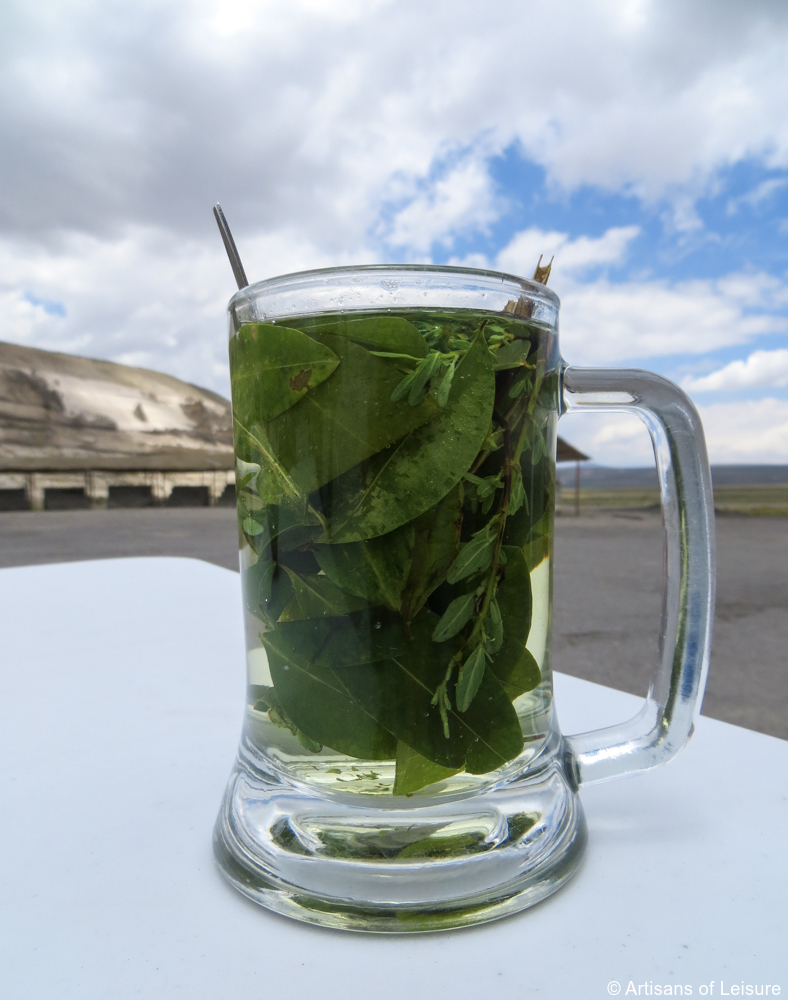
The drive passes through Salinas y Aguada Blanca National Reserve. These wetlands are home to flamingos, vicunas, and other birds and animals.
Local people living in the region typically tend alpacas and other animals.
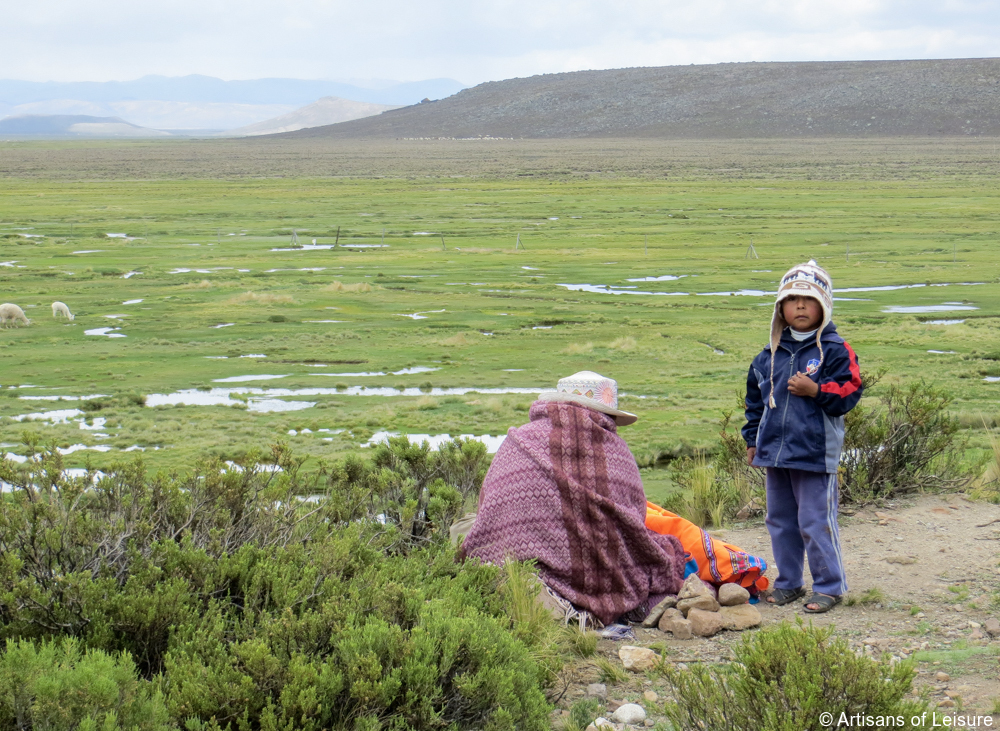
In Colca Valley, locals in the town of Yanque perform dances in the plaza early in the morning.
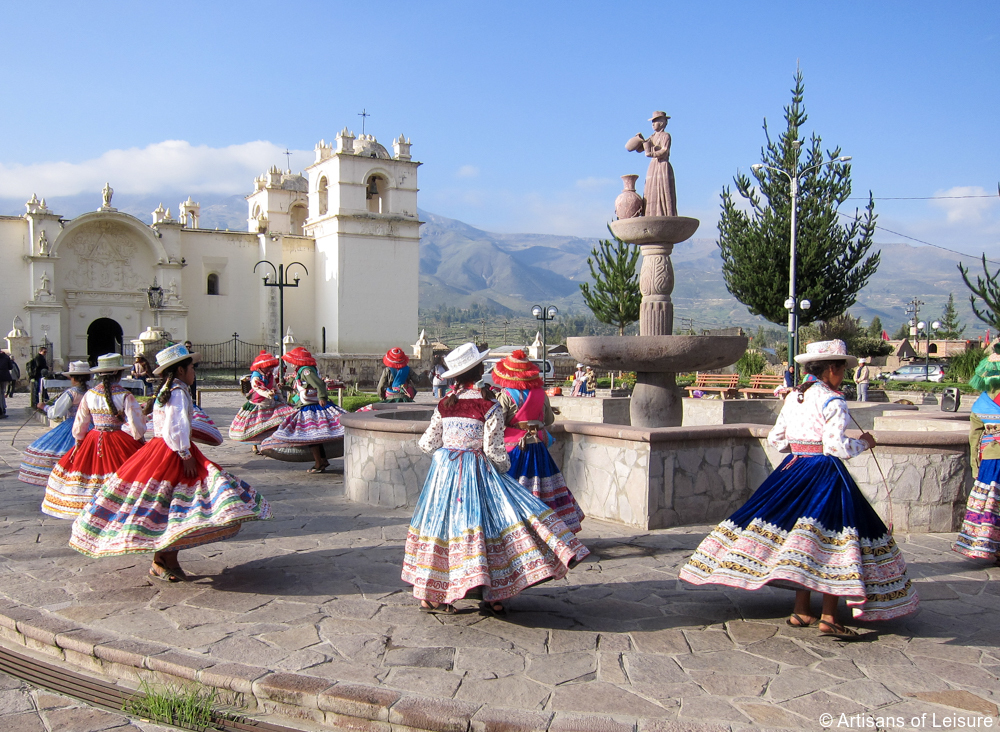
Here are villagers in the traditional garb of the region.
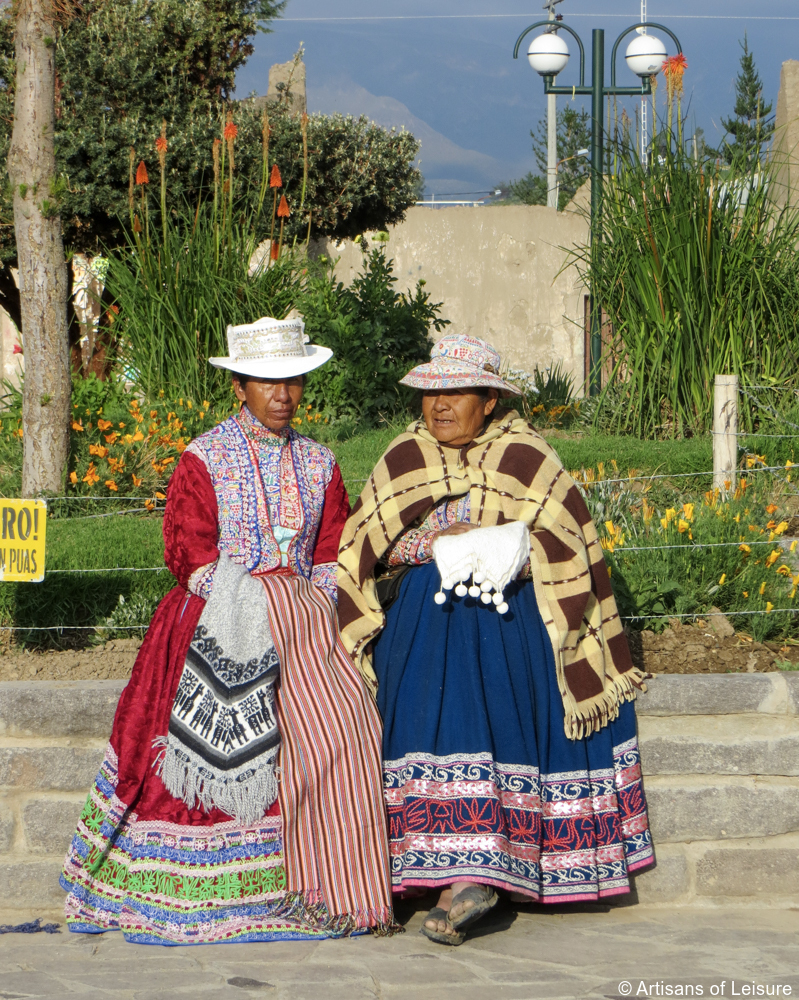
Colca Canyon is one of the world’s deepest chasms. The spectacular jagged mountainsides are dotted with tiny settlements. It’s fascinating to imagine life in such a remote and inaccessible environment.
We ventured to Cruz del Condor, at the edge of the canyon, to watch wild Andean condors fly through the area. Artisans of Leisure’s expert guides have a knack for knowing when the birds are about to appear.
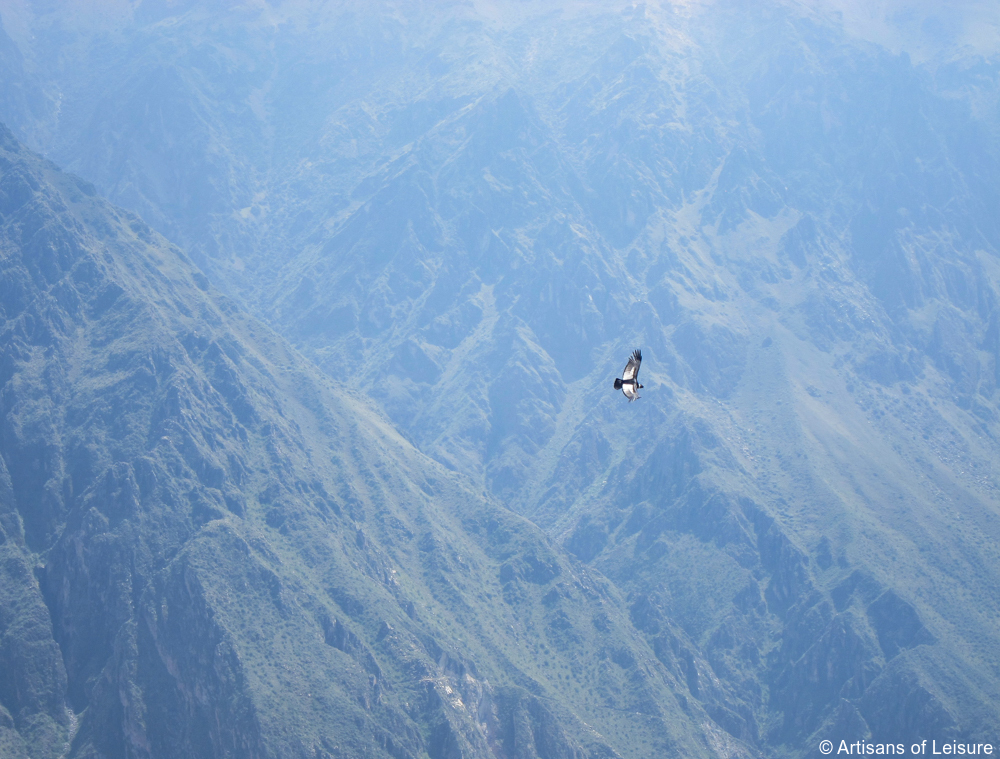
Our next stop was the Sacred Valley, which has stunning scenery, magnificent ruins, vibrant markets, skilled artisans and luxury hotels.
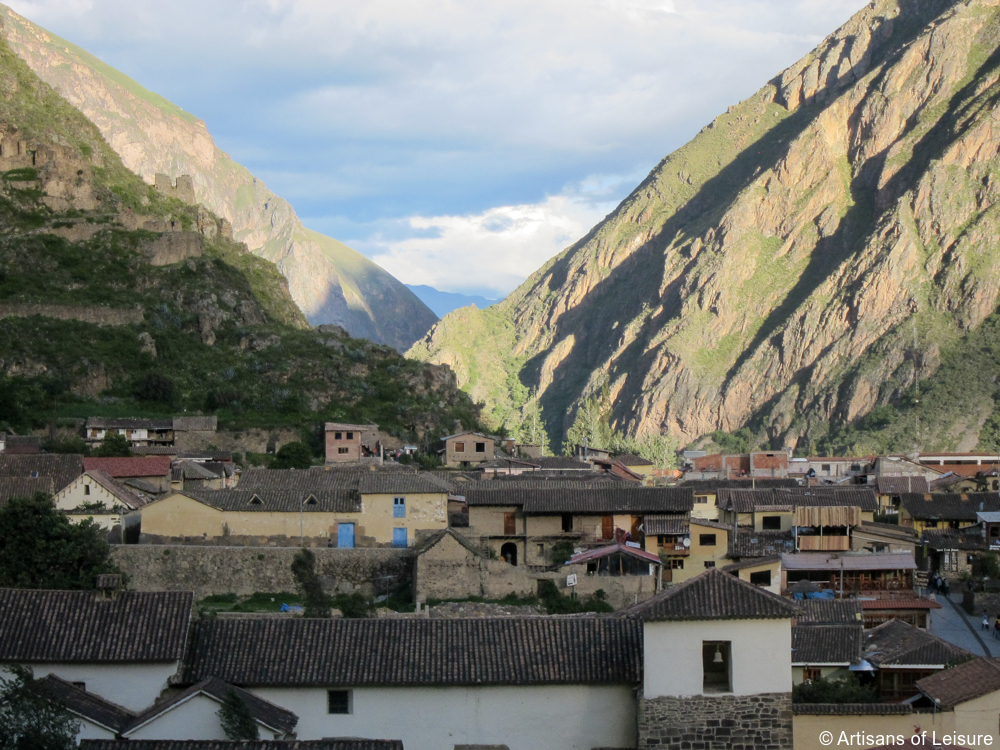
Artisans of Leisure can arrange private visits with local artisans who are reviving and preserving traditional weaving techniques. Our travelers can enjoy a demonstration or hands-on lesson with one of Peru’s top weavers.
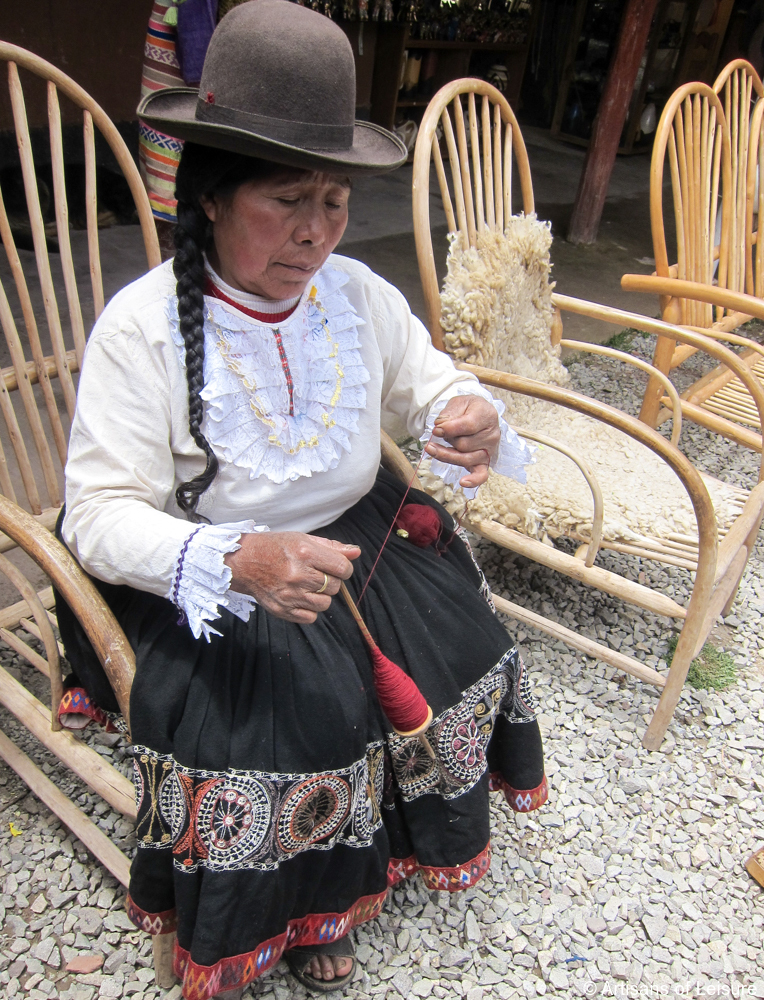
Dyes are made the traditional way, using local plants, minerals and insects.
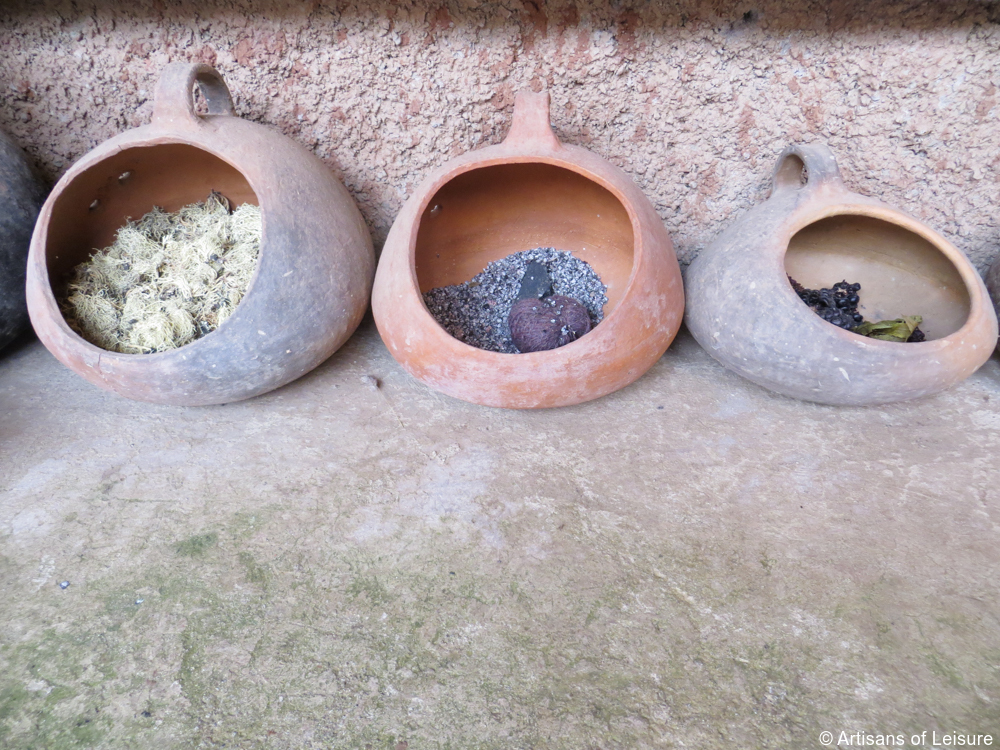
Killa Wasi restaurant at Sol y Luna Lodge & Spa serves some of the most creative and delicious food in the Sacred Valley.
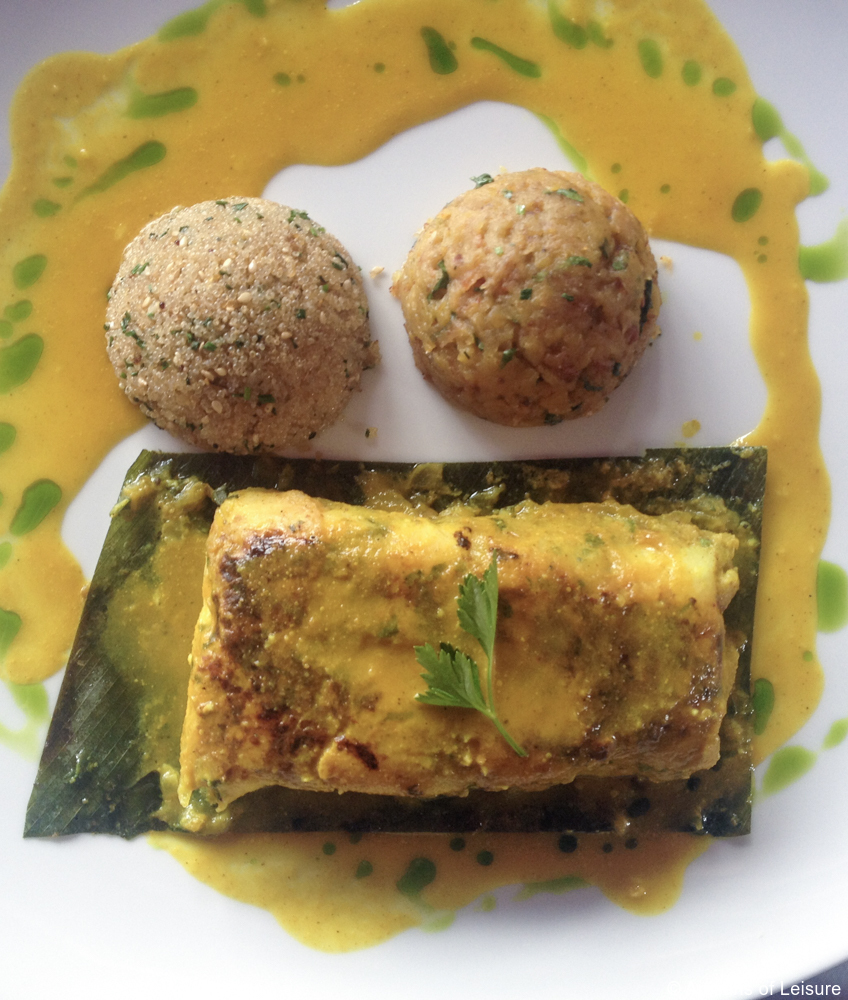
Buildings in the village of Ollantaytambo often have original Inca architectural details, including stone foundations.
Inside a typical local home, you might see religious offerings and guinea pigs, which are considered a culinary delicacy in the Andes.
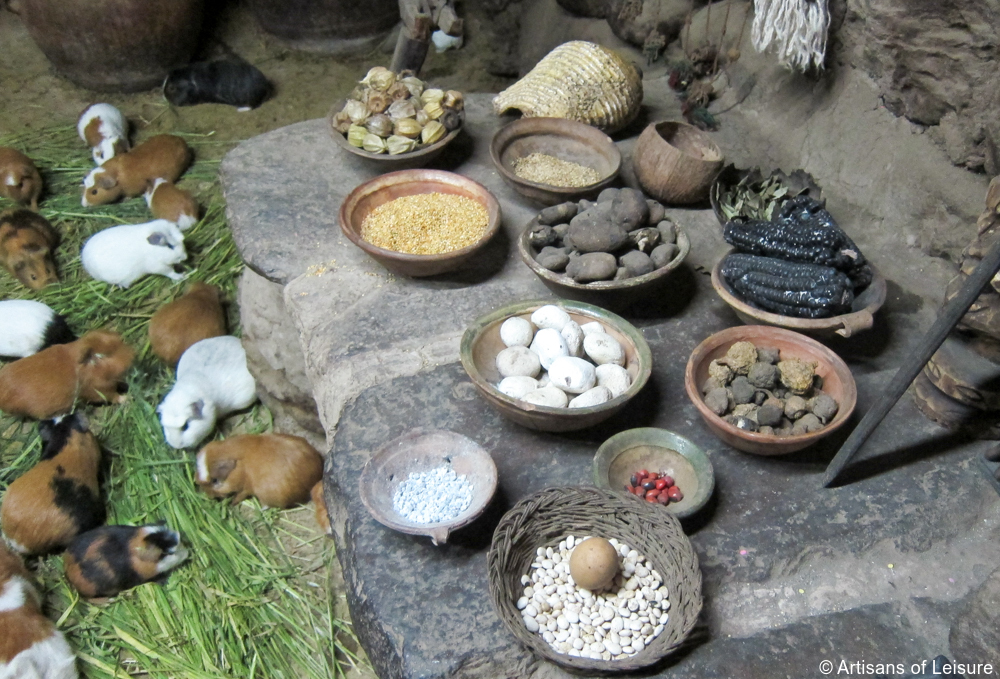
Inkaterra Hacienda Urubamba is one of our preferred hotels in the Sacred Valley.
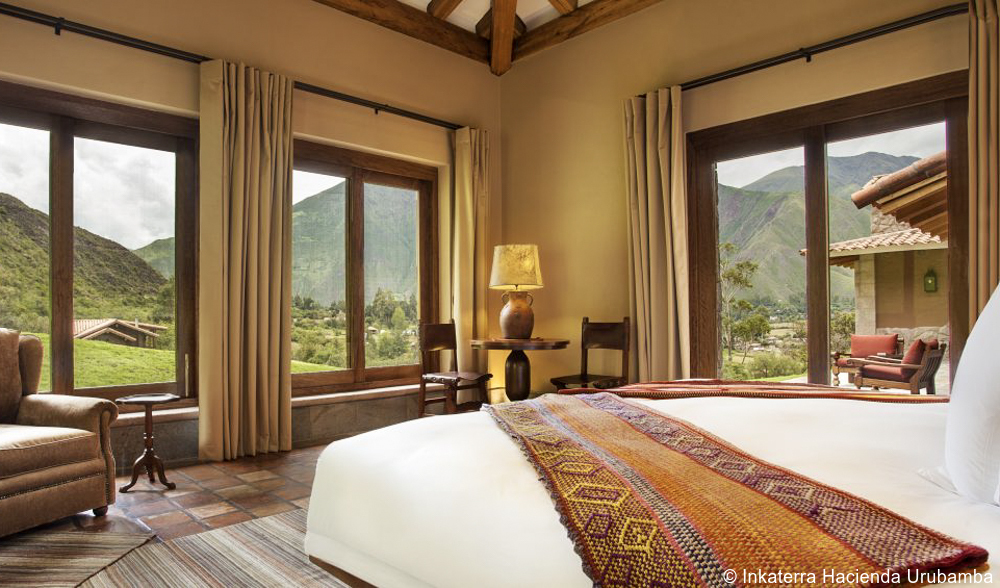
Another of our preferred properties in the area, Tambo Del Inka Resort & Spa Valle Sagrado is a luxury resort that combines Peruvian style with world-class service and amenities, such as this luxurious pool located in the hotel spa.
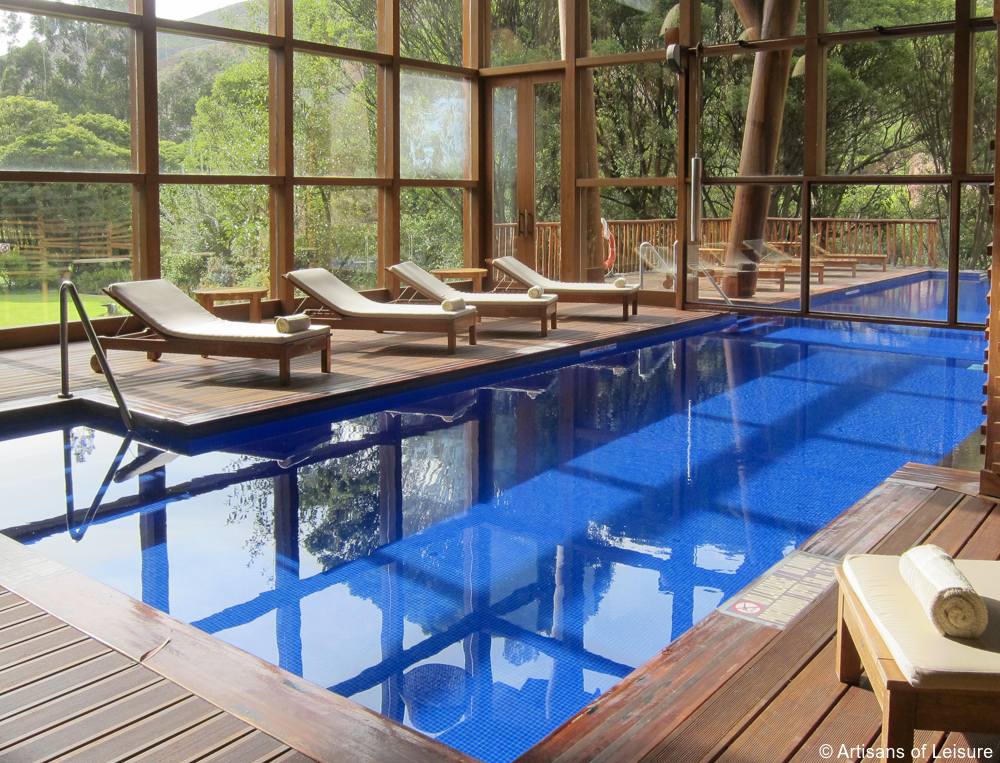
We loved visiting the market with a local chef, who has a personal relationship with many of the vendors.
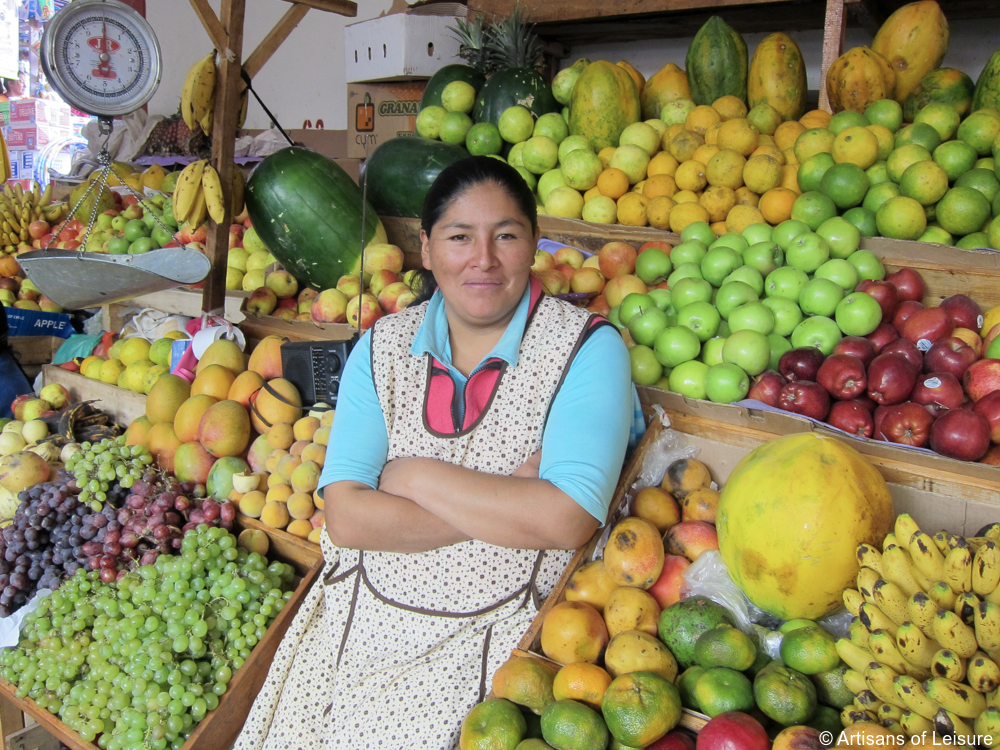
The Sacred Valley is incredibly fertile, and the markets teem with colorful fruit, vegetables, grains and beans.
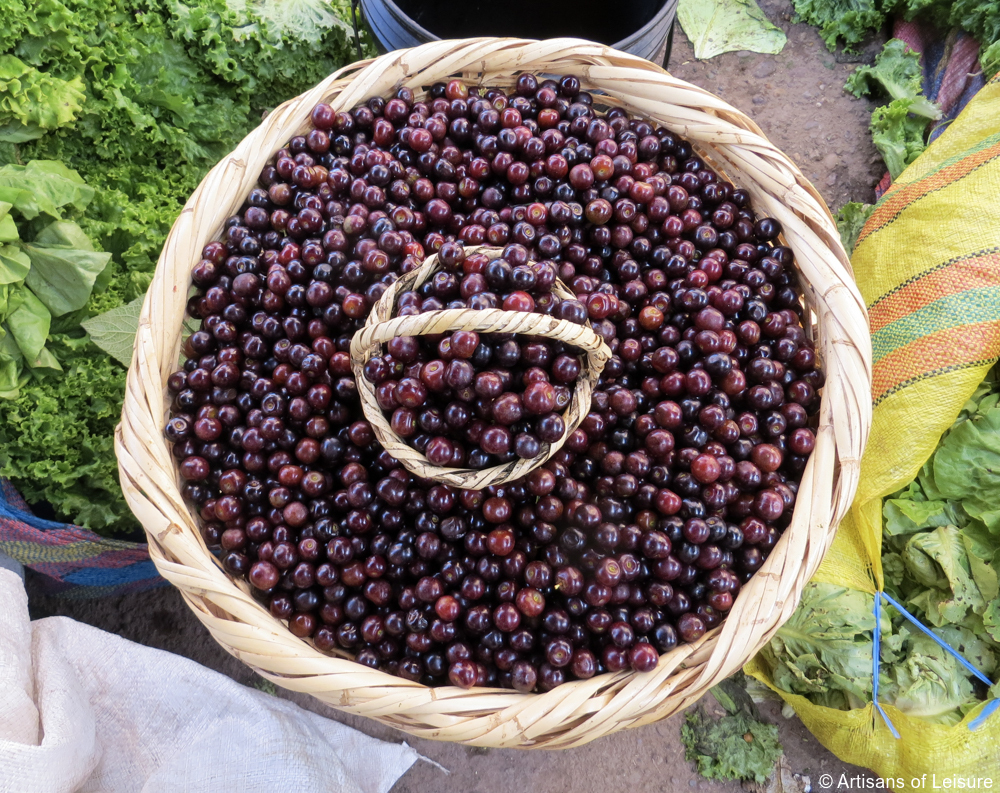
Following the market visit, we enjoyed a private cooking class at a favorite local restaurant, where we learned to make traditional Peruvian dishes…
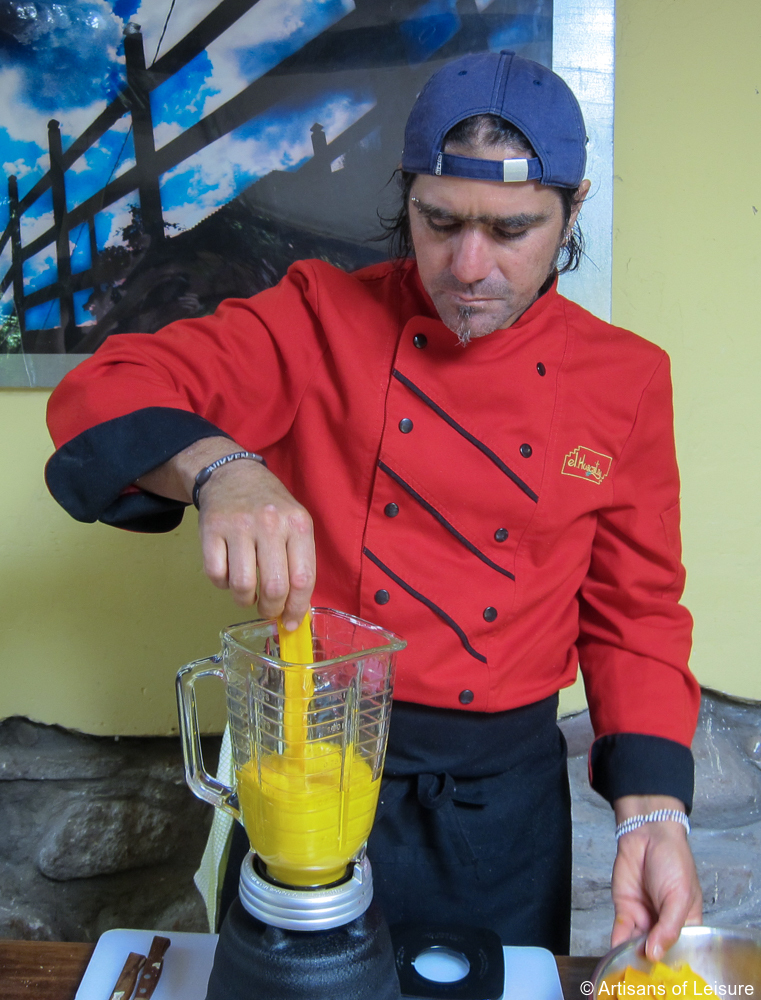
…such as causa, which features potatoes and peppers, some of the most popular local ingredients. Causa can incorporate a variety of main ingredients, including shrimp.
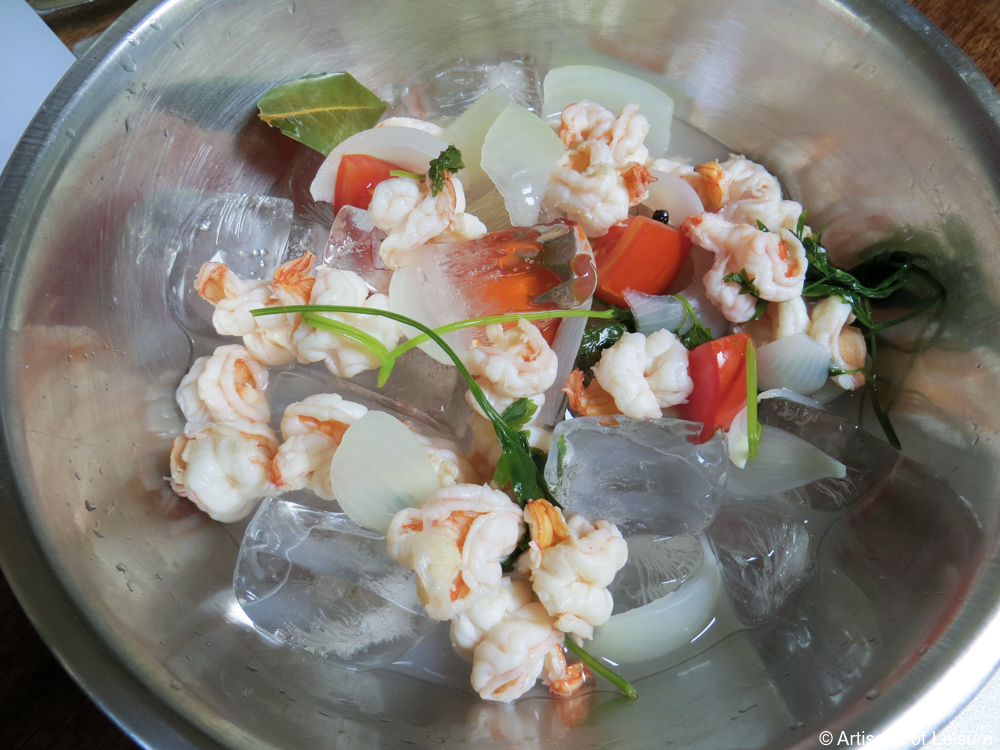
Our elaborate finished products were delicious!
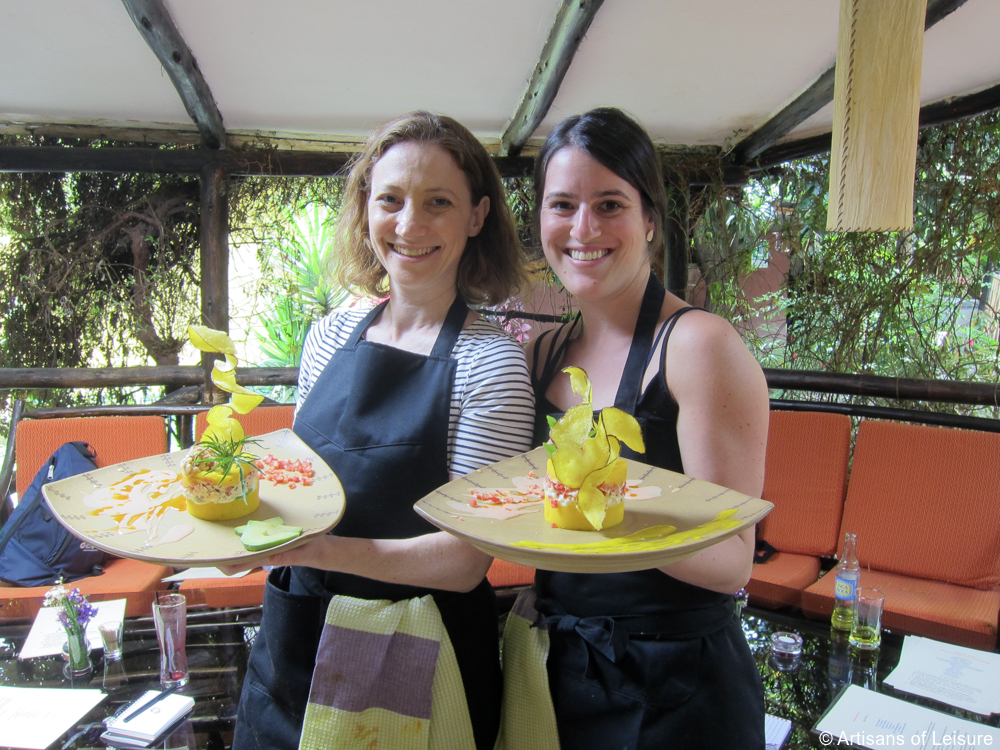
Artisans of Leisure can arrange a visit to a ceramics studio, including a hands-on workshop or a meeting with craftspeople.
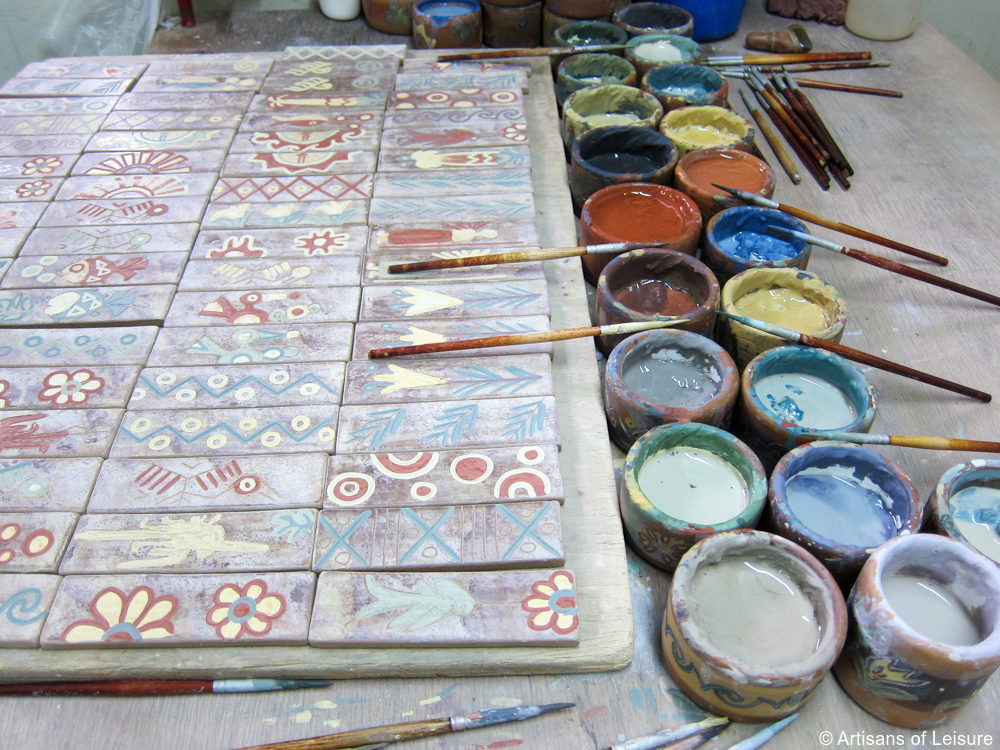
The Sacred Valley is also a great location for shopping for beautiful textiles, housewares…
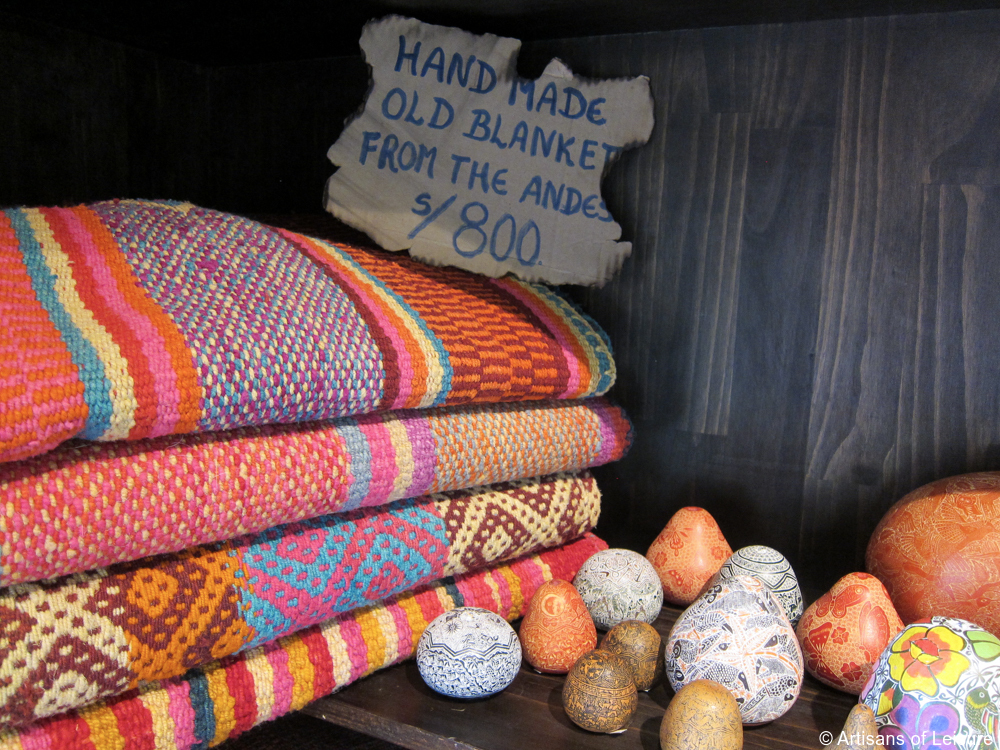
…and pottery.
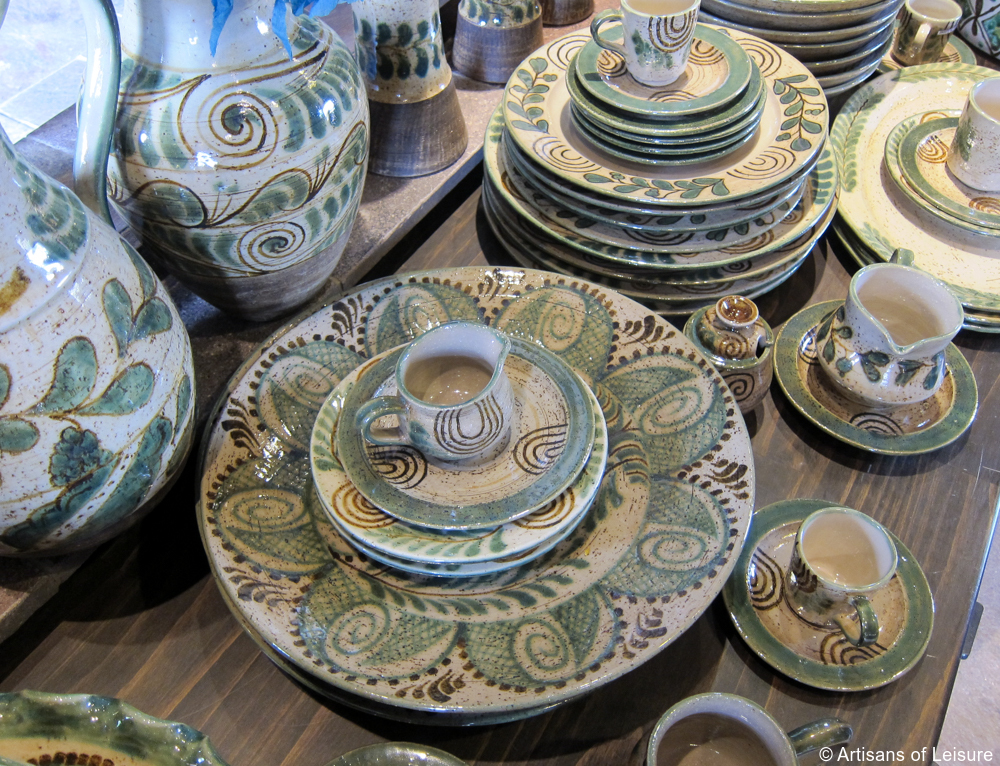
This weaving collective assists women in becoming financially independent by producing woven works of art.
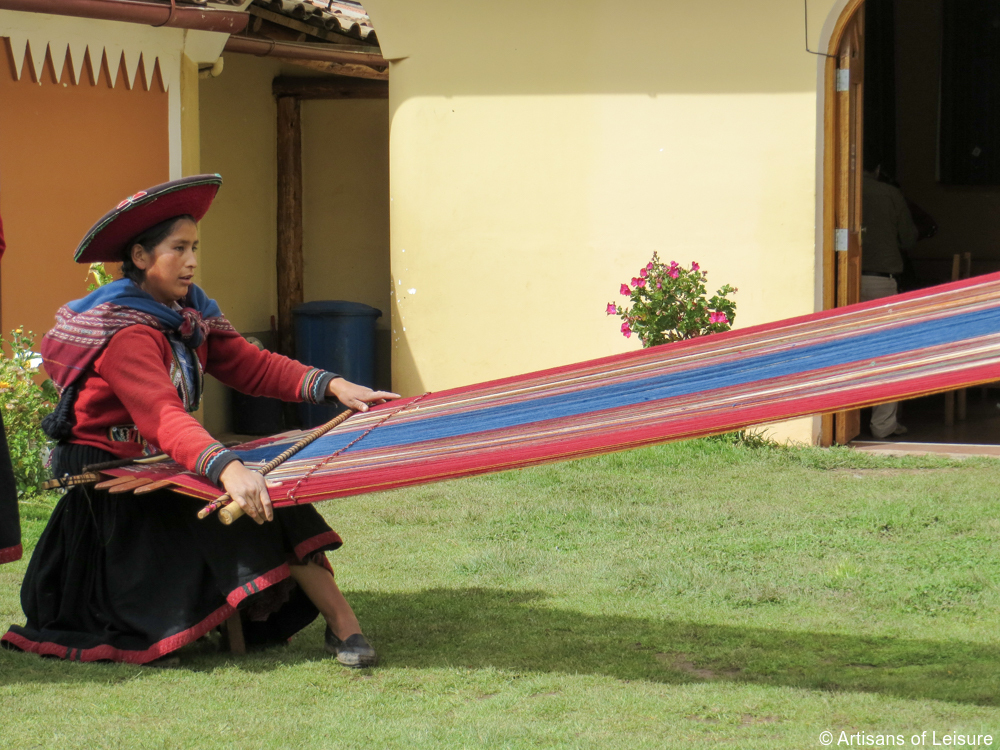
It was fascinating to learn about different looms and traditional weaving techniques.
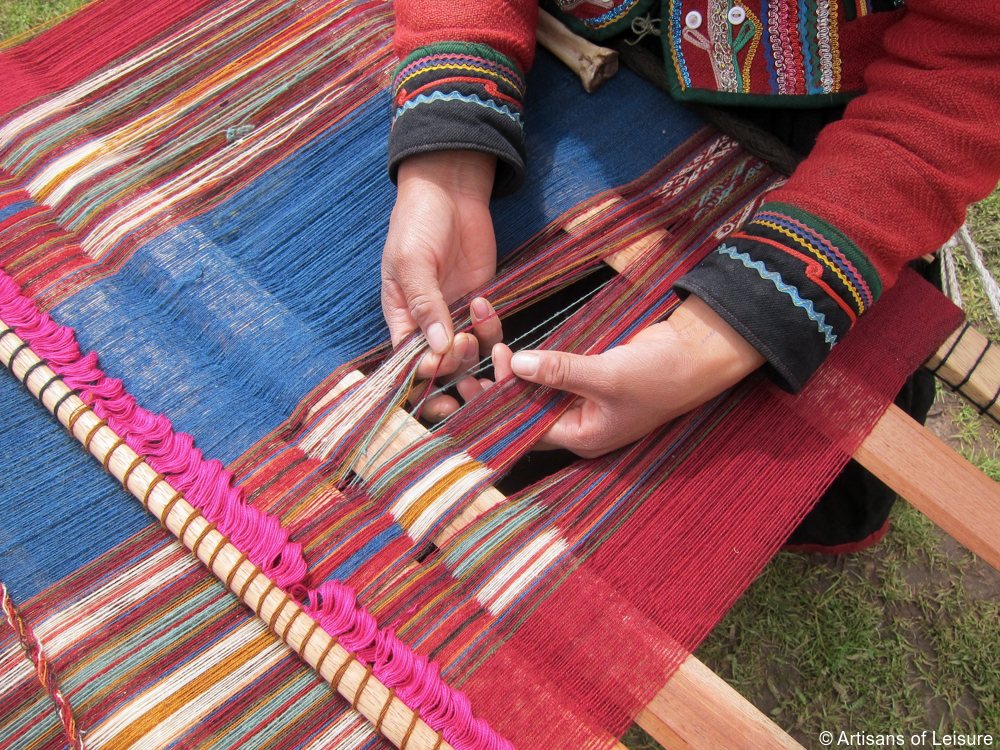
The finished products are impressive and often contain many colors and intricate details
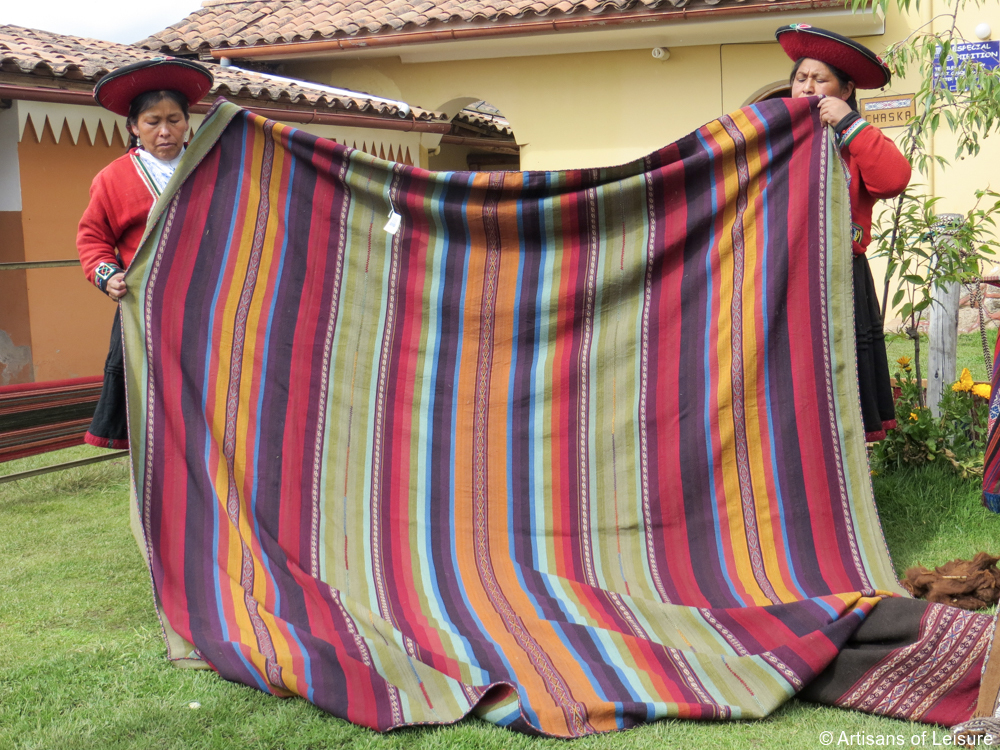
No trip to Peru is complete without a visit to Machu Picchu. Like our travelers, we enjoyed riding the luxurious Belmond Hiram Bingham train to Aguas Caliente, the gateway to the Inca citadel.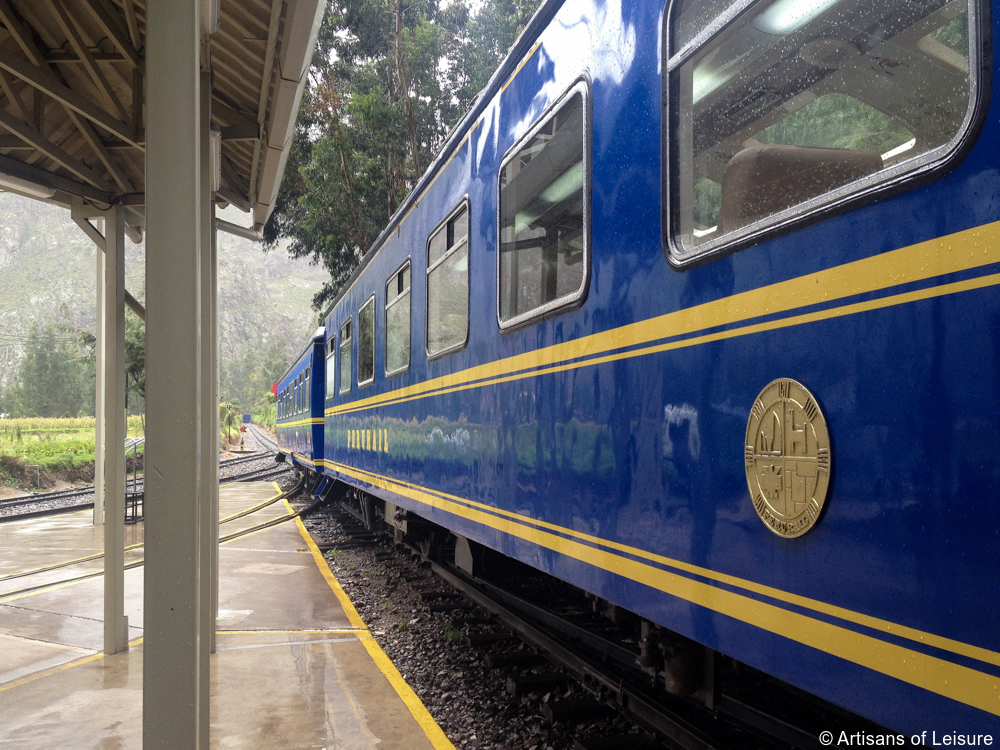
As the Hiram Bingham train passes through a dramatic valley in the Andes, passengers can admire the views or have a drink accompanied by live music in the wood-paneled bar car. A delicious gourmet meal is also served on board.
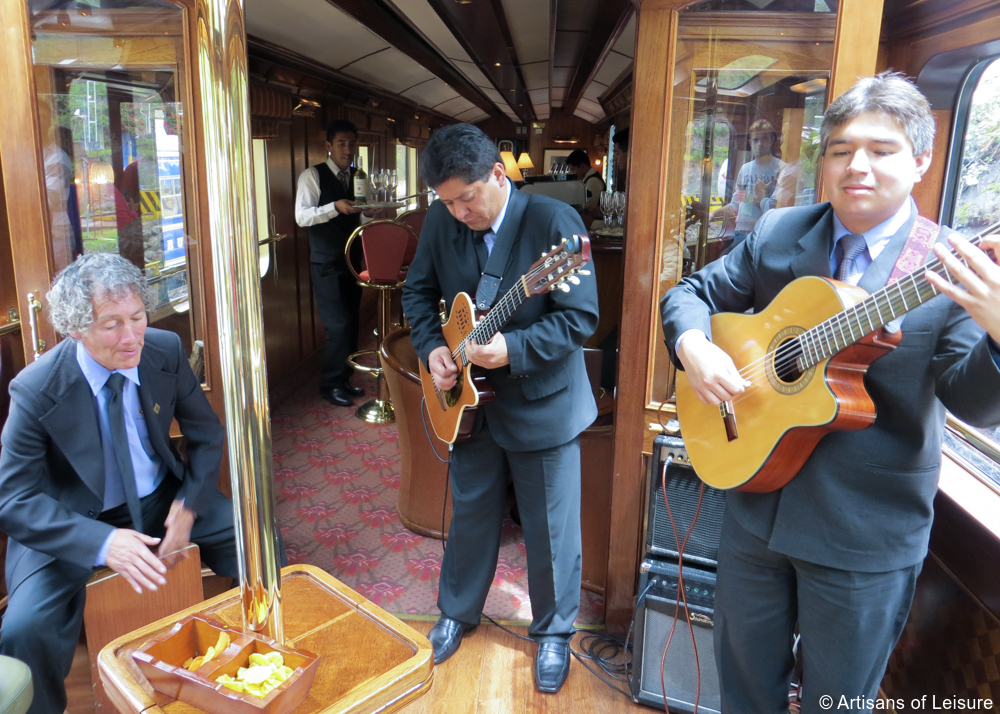
Belmond’s exclusive Sanctuary Lodge is the only hotel adjacent to the entrance to Machu Picchu. The outdoor spa features magnificent views of the Andes.
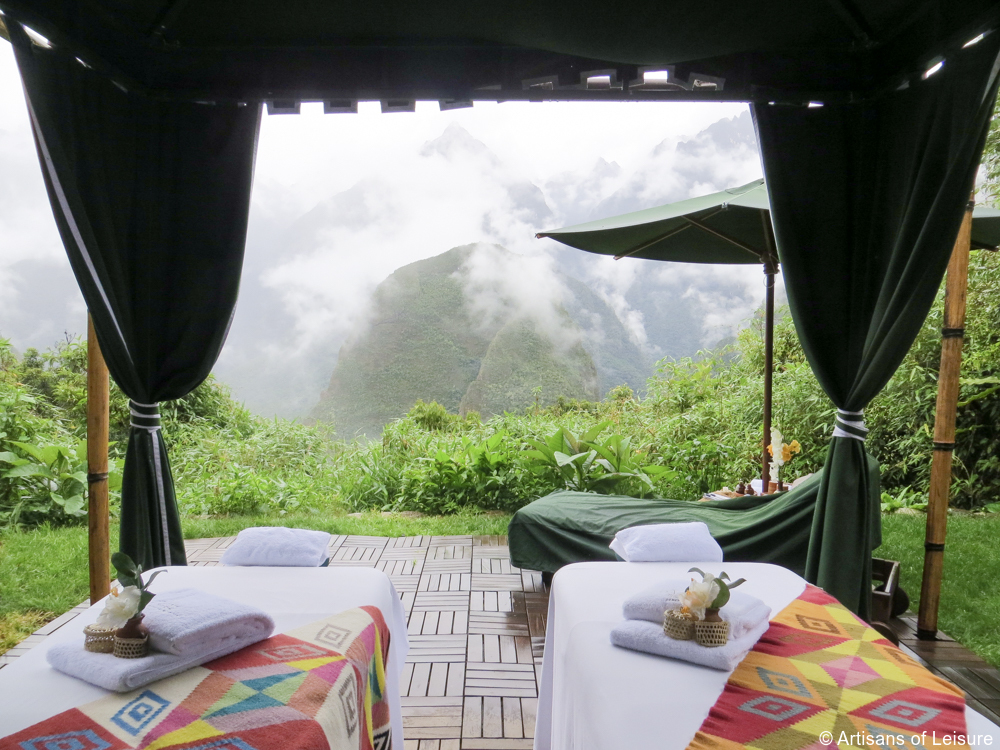
UNESCO World Heritage-listed Machu Picchu is one of the world’s great archaeological wonders. The setting is as impressive as the ruins.
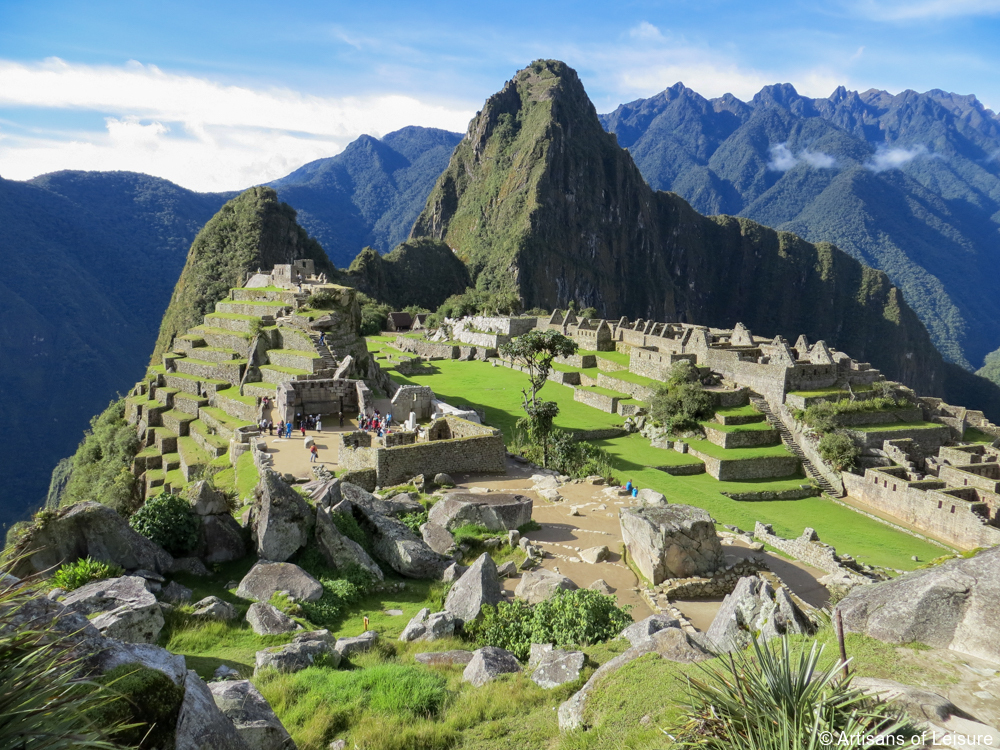
Here, a camelid grazes on the grounds of Machu Picchu.
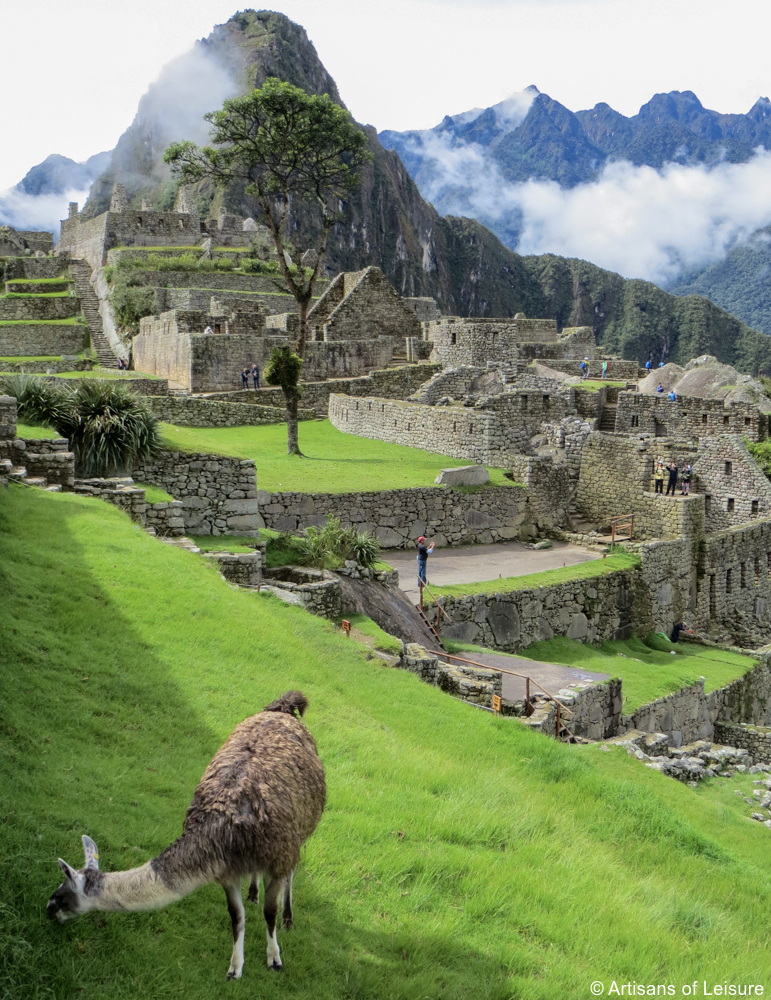
We enjoyed an early-morning hike up Huayna Picchu, the tall peak that towers above Machu Picchu. The climb was rigorous and exciting, and we loved the new perspective over the ruins.
Entry to Huayna Picchu is limited, but Artisans of Leisure can arrange permits for this hike and others in the region. We also organize permits and logistics for multi-day hikes along the iconic Inca Trail, including porters, camping equipment, meals and a personal massage therapist.
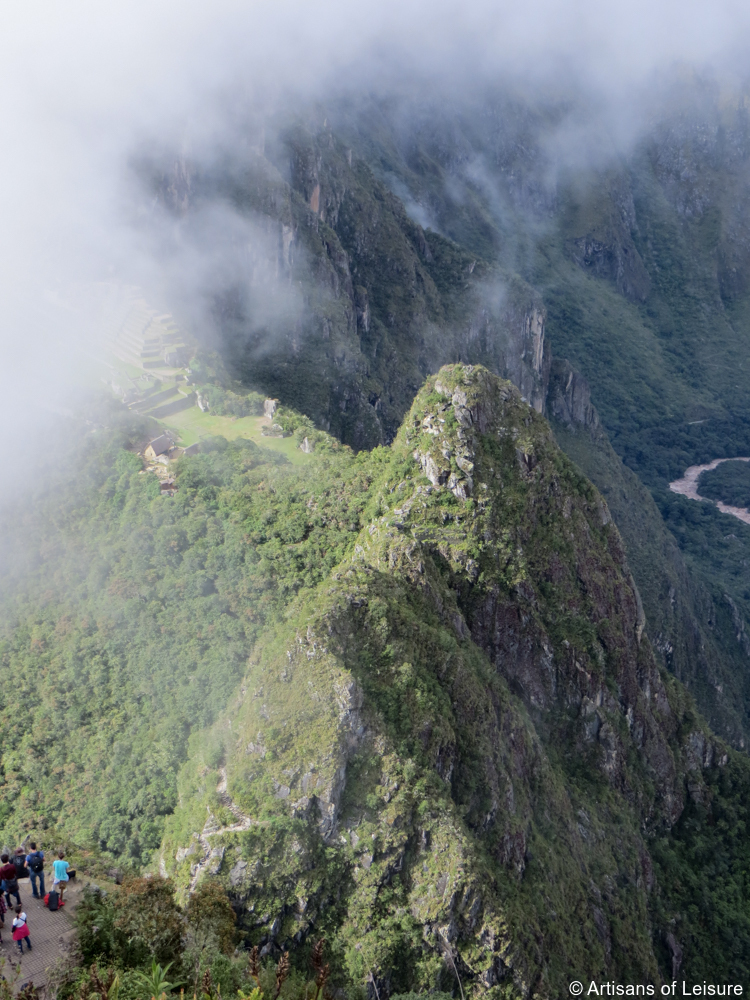
The descent from Huayna Picchu is breathtaking but certainly not for the faint of heart!
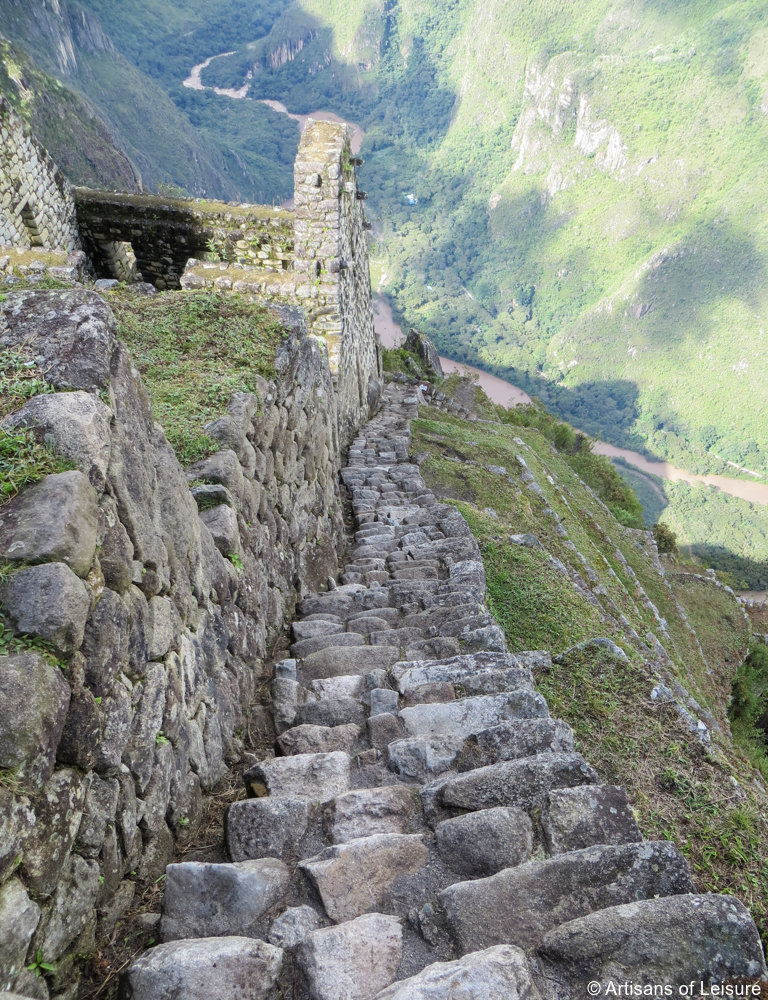
Next, we traveled to Cusco. The UNESCO World Heritage City features Inca and Spanish colonial architecture, beautiful churches, vibrant crafts markets and luxurious hotels.
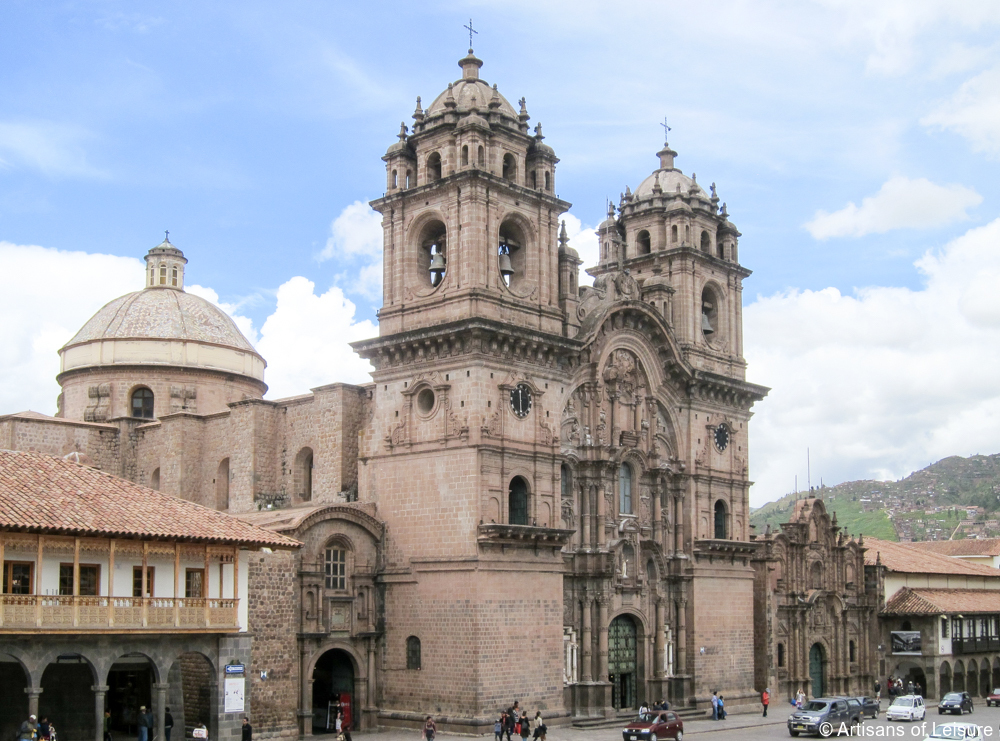
One of our preferred properties in Cusco is Palacio Nazarenas, a Belmond Hotel. The all-suite hotel offers refined accommodation inside a former palace and 17th-century convent. Oxygen is pumped into the rooms to assist guests with acclimating to the city’s high elevation (11,200 ft/3,400 m).
We enjoyed the hotel’s impeccable service, luxurious rooms, breakfast featuring homemade breads and jams, and exceptional restaurant.
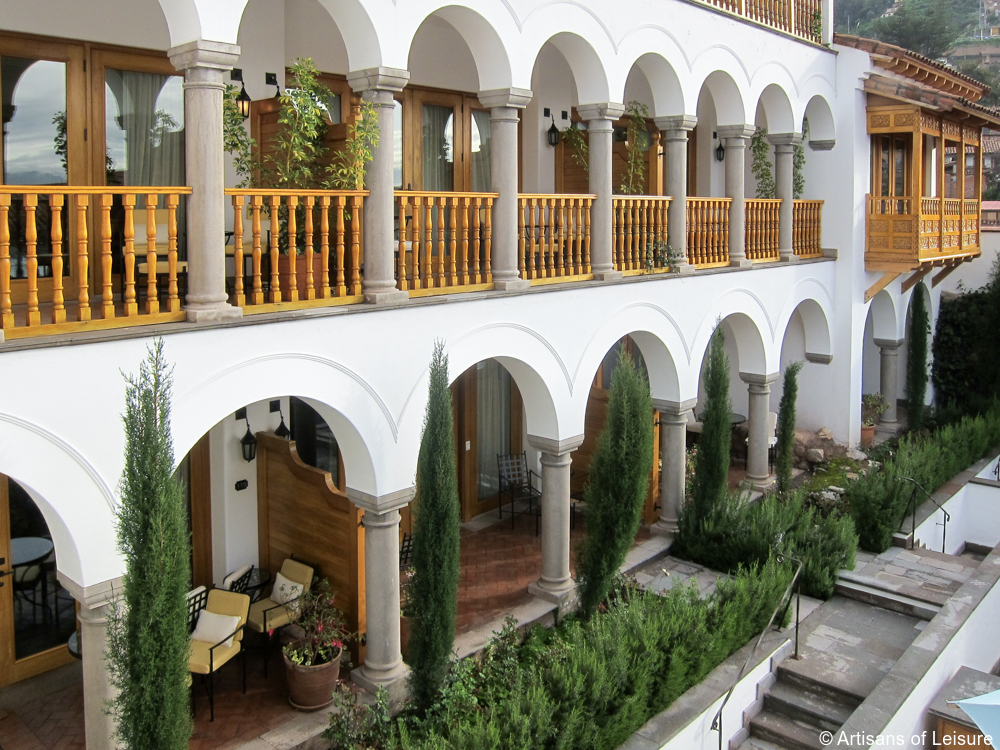
The spacious rooms at Palacio Nazarenas feature period furniture and private butler service.
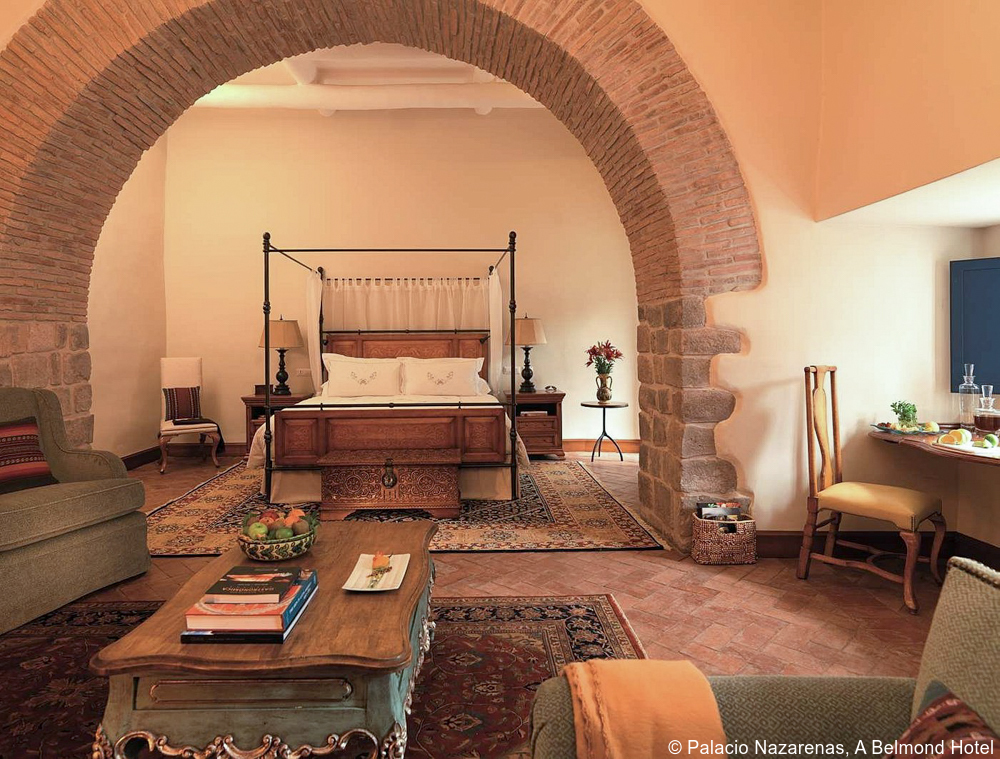
We explored Cusco’s colorful streets…
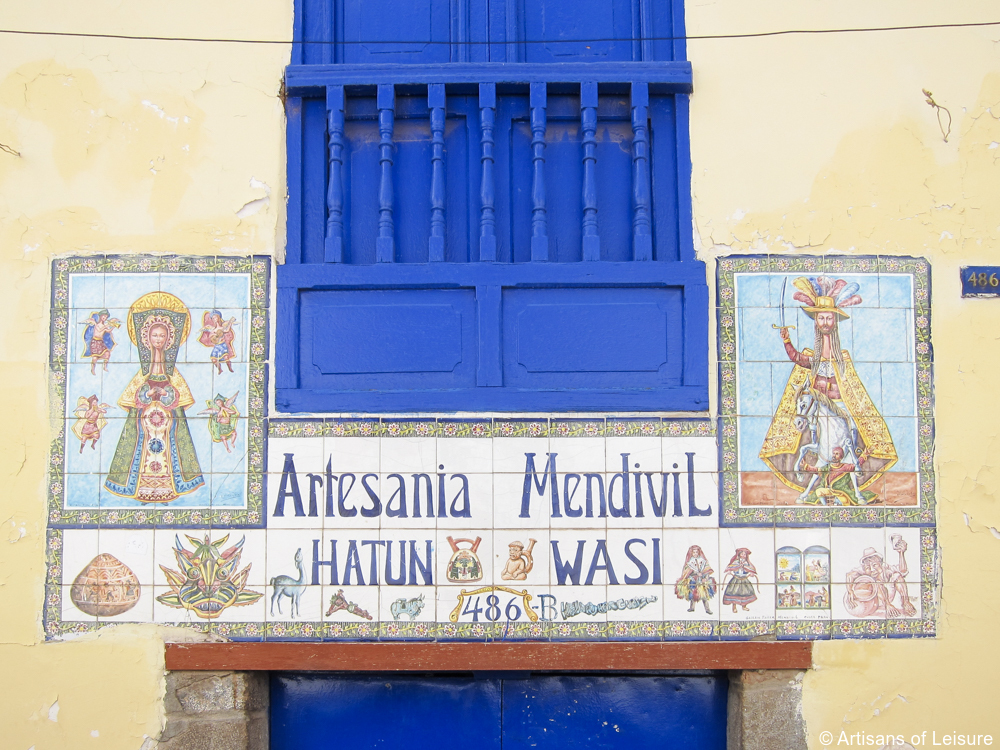
…appreciating architectural details like this decorated ceiling…
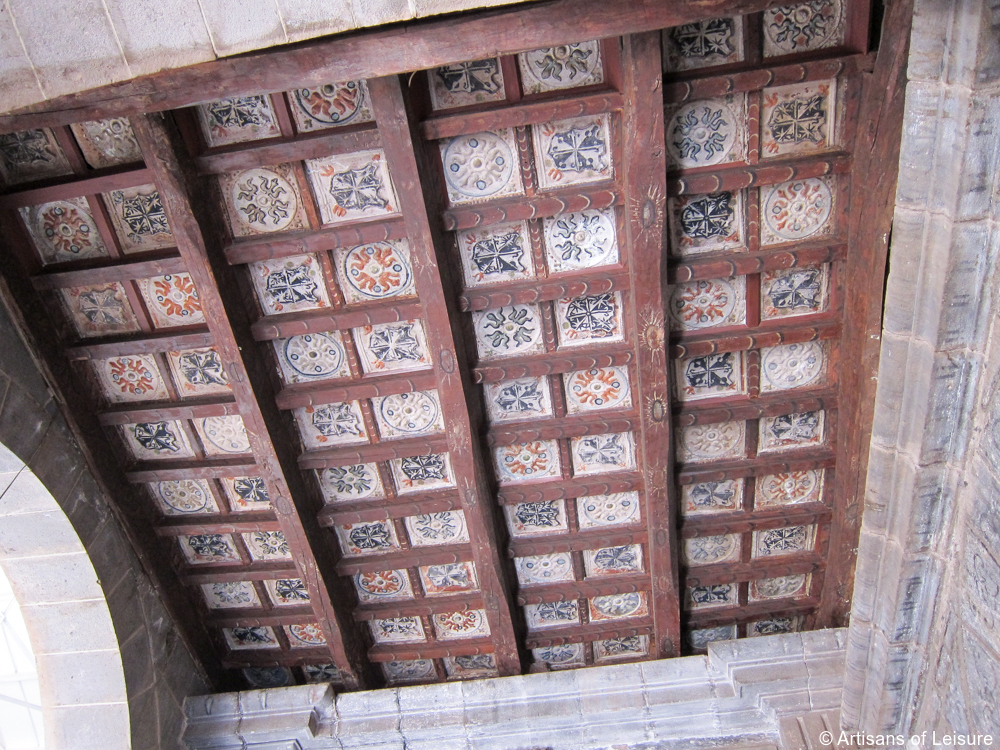
…and visiting historic monasteries, cathedrals and Inca sites.
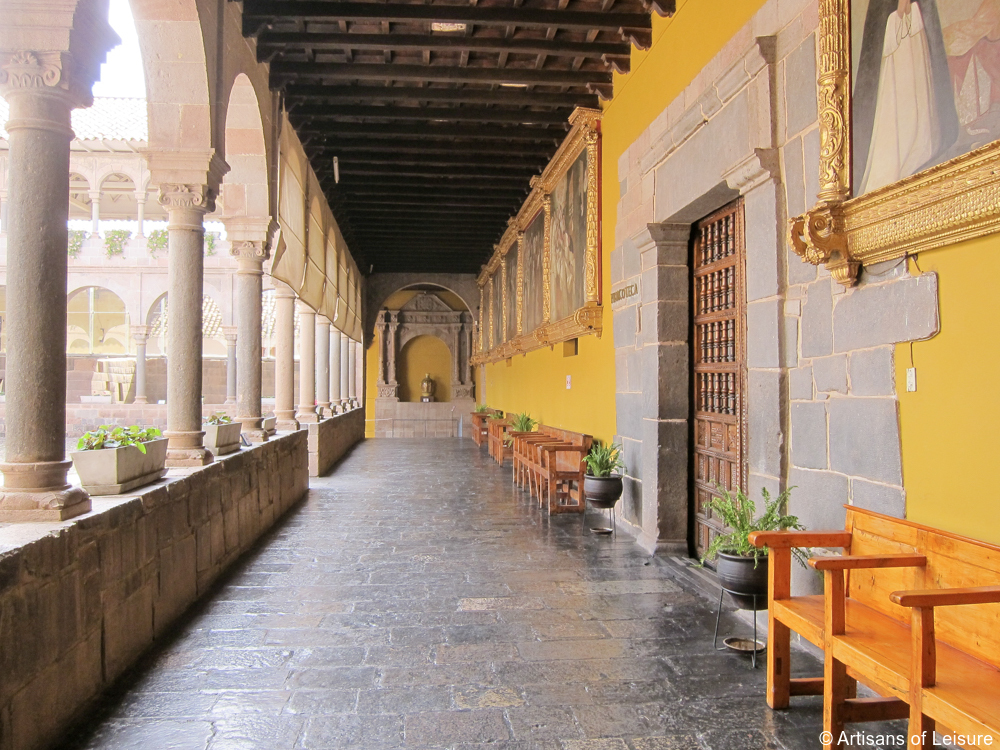
We next journeyed to southern Peru to see the astonishing Nazca Lines, ancient geoglyphs depicting jaguars, monkeys, humans and other figures. The geoglyphs are best seen on a short flight over the plateau.
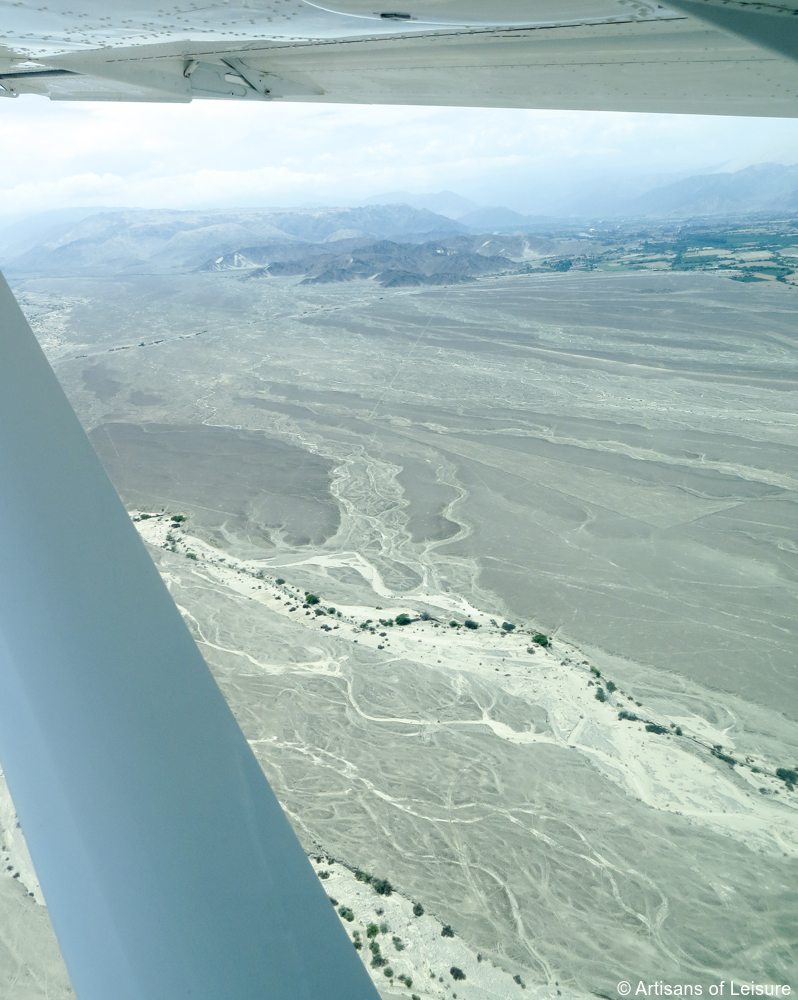
The Hummingbird is one of the most famous Nazca images.
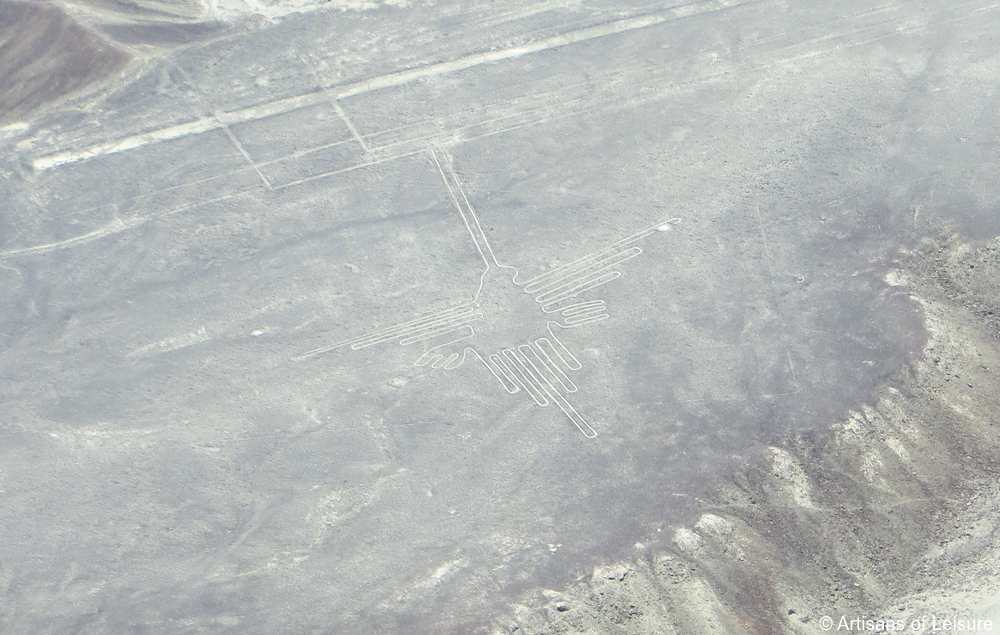
We also explored the Islas Ballestas, islands just off the coast of southern Peru that are known for their wildlife.
The gorgeous geological formations are famous for hosting enormous populations of cormorants, terns, penguins, boobies…
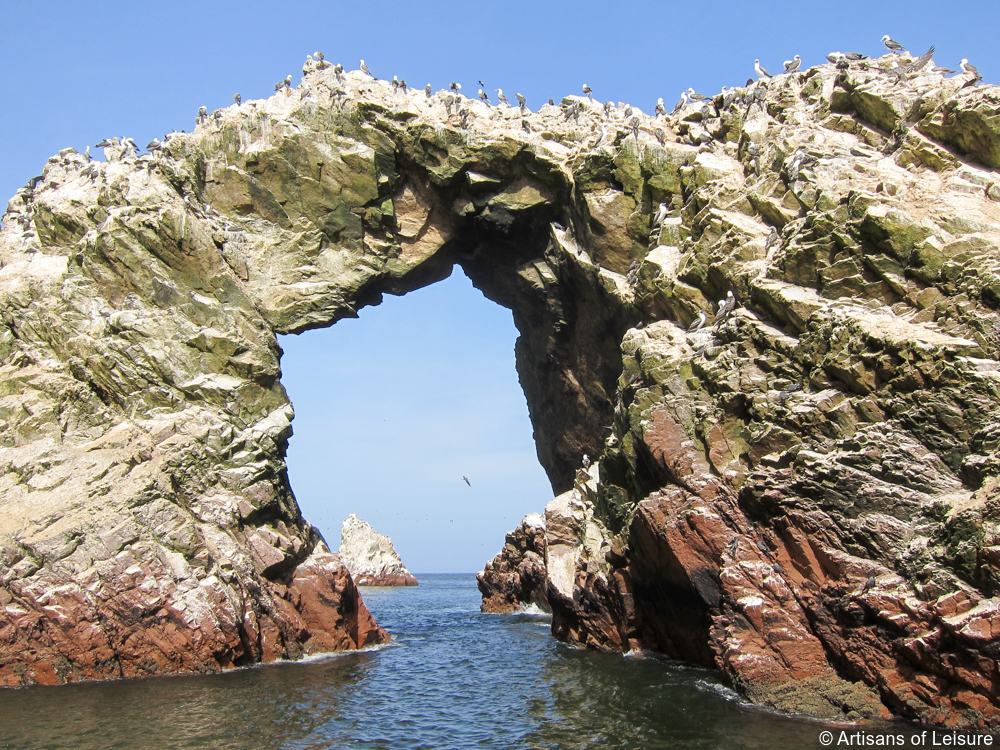
…pelicans and other birds.
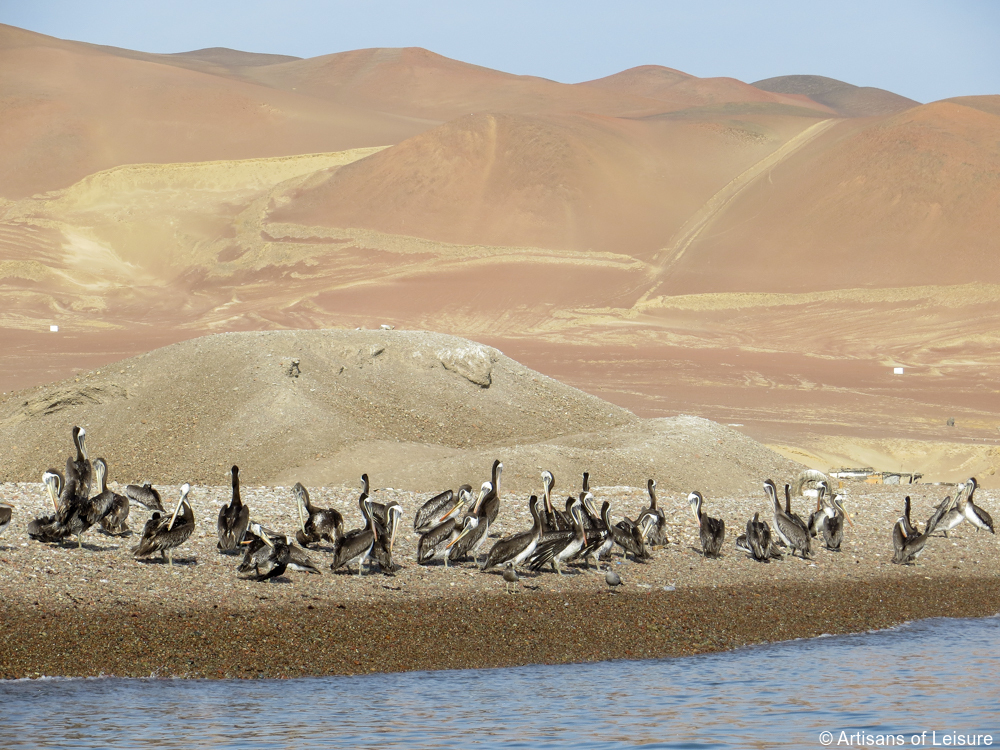
The highlight for us was a colony of sea lions that included adorable and playful pups.
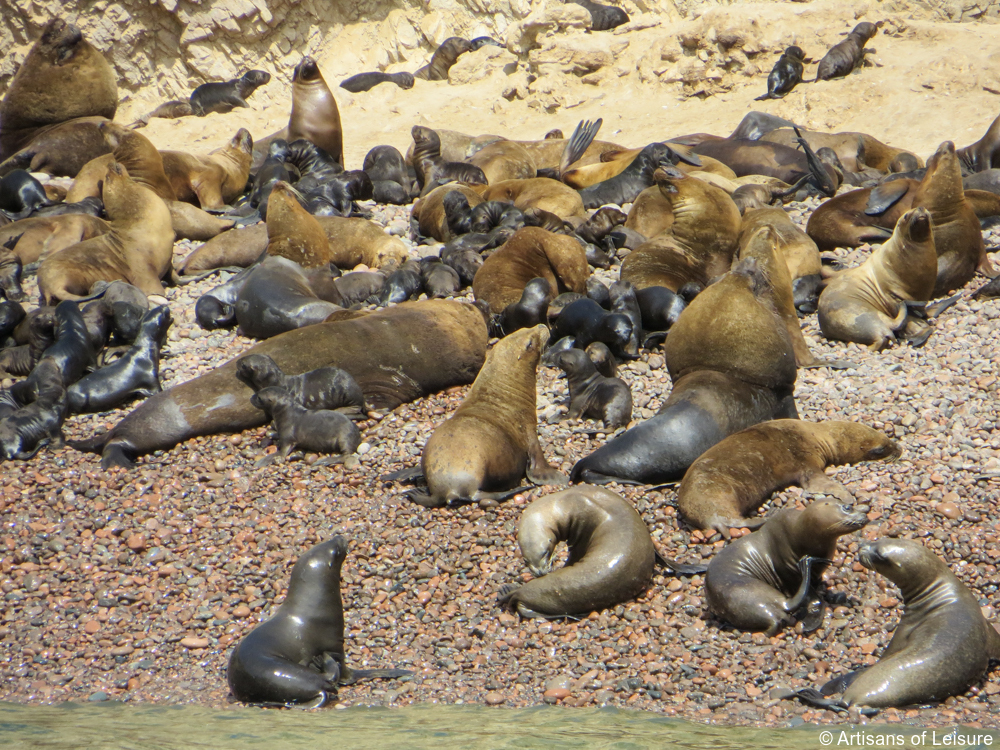
During the cruise to the islands, we also saw the “candelabra” geoglyph on a hillside along the coast. Surprisingly, scholars believe that it is not related to the Nazca Lines.
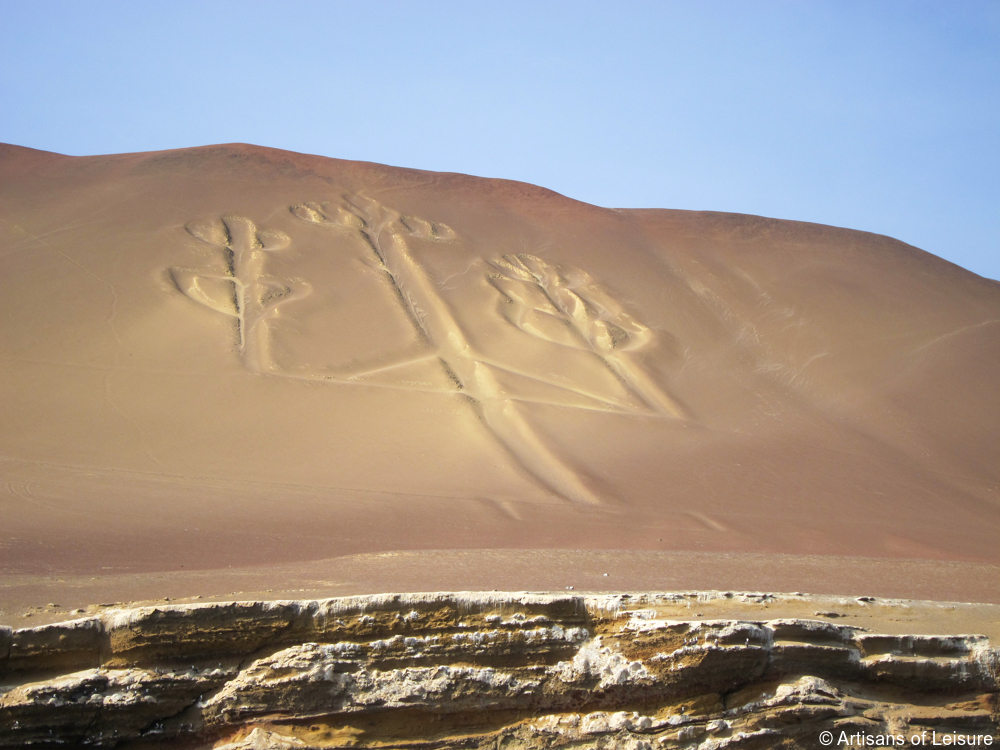
Contact one of our travel experts to start planning a private Peru tour.
Destinations: Peru, South America
Tags: Arequipa, Belmond Miraflores Park, Colca Canyon, cooking class, culinary tours, Cusco, hiking, Hiram Bingham train, Huayna Picchu, Inca ruins, Larco Museum, Lima, local markets, luxury Peru tours, Machu Picchu, Machu Picchu tours, Nazca Lines, Ollantaytambo, Peru active tours, private Peru tours, Sacred Valley, Santa Catalina Monastery, Sol y Luna Lodge & Spa, Tambo Del Inka Resort & Spa, textiles, traditional crafts, UNESCO World Heritage Site, weaving

 MENU
MENU